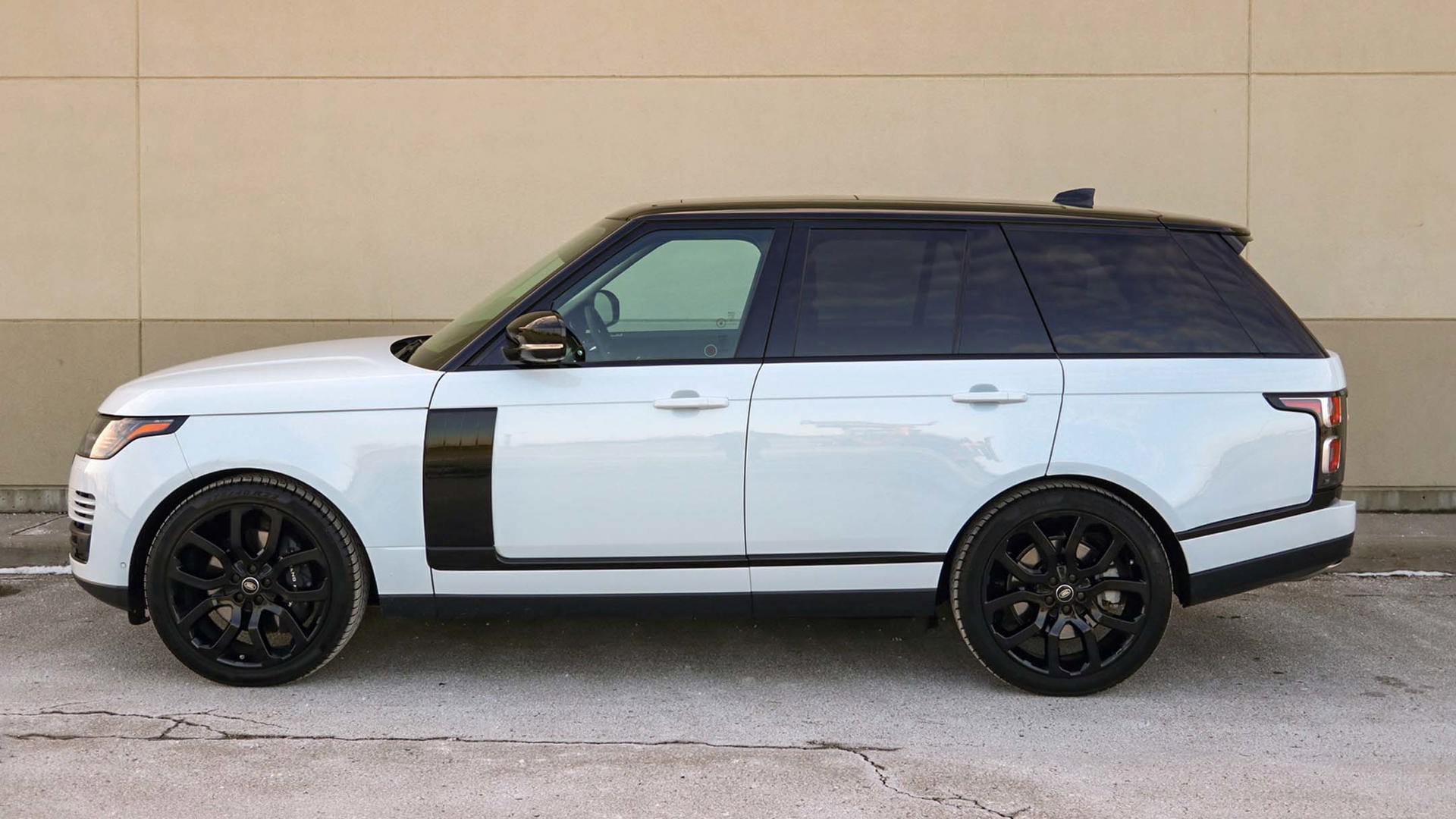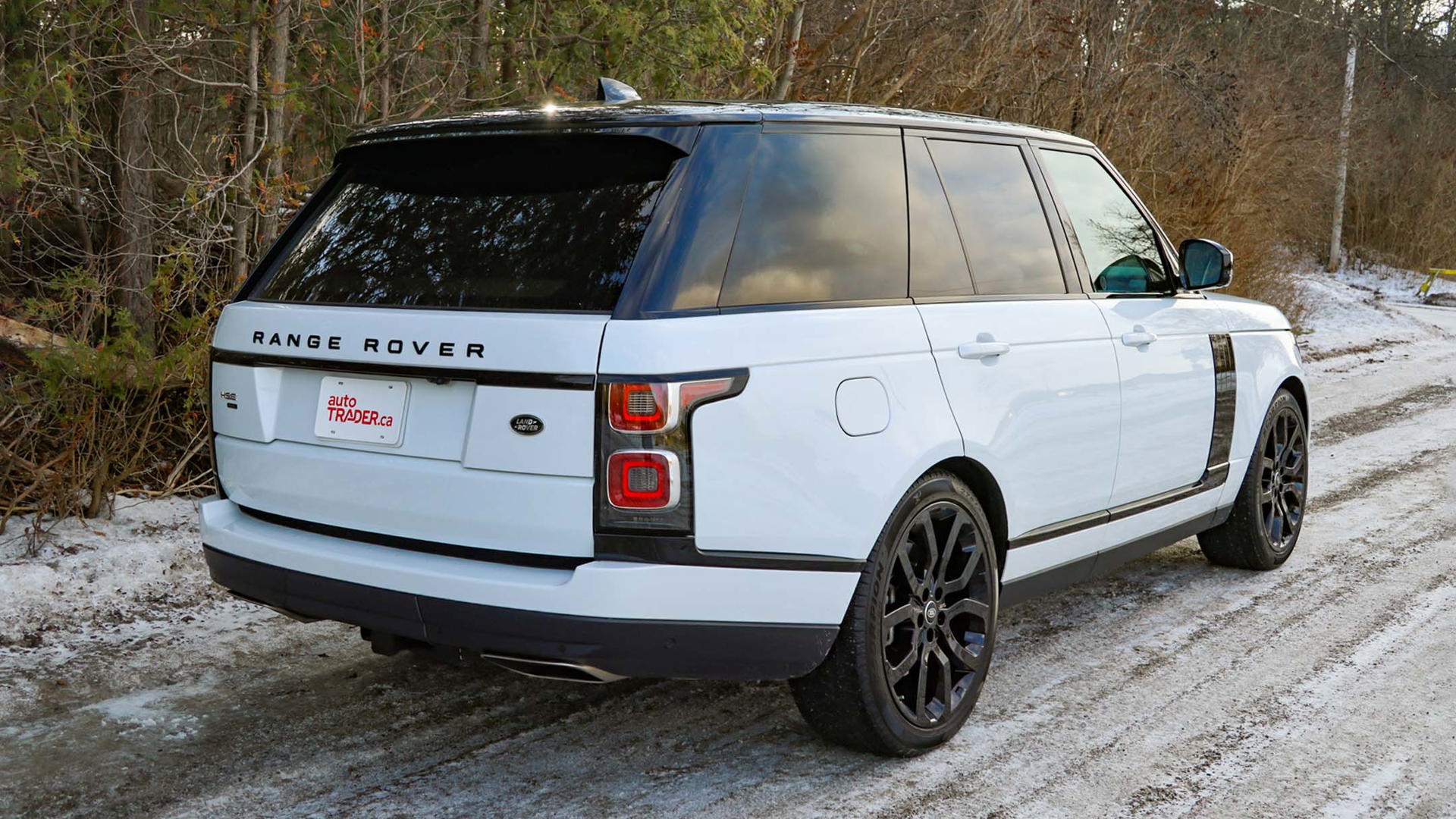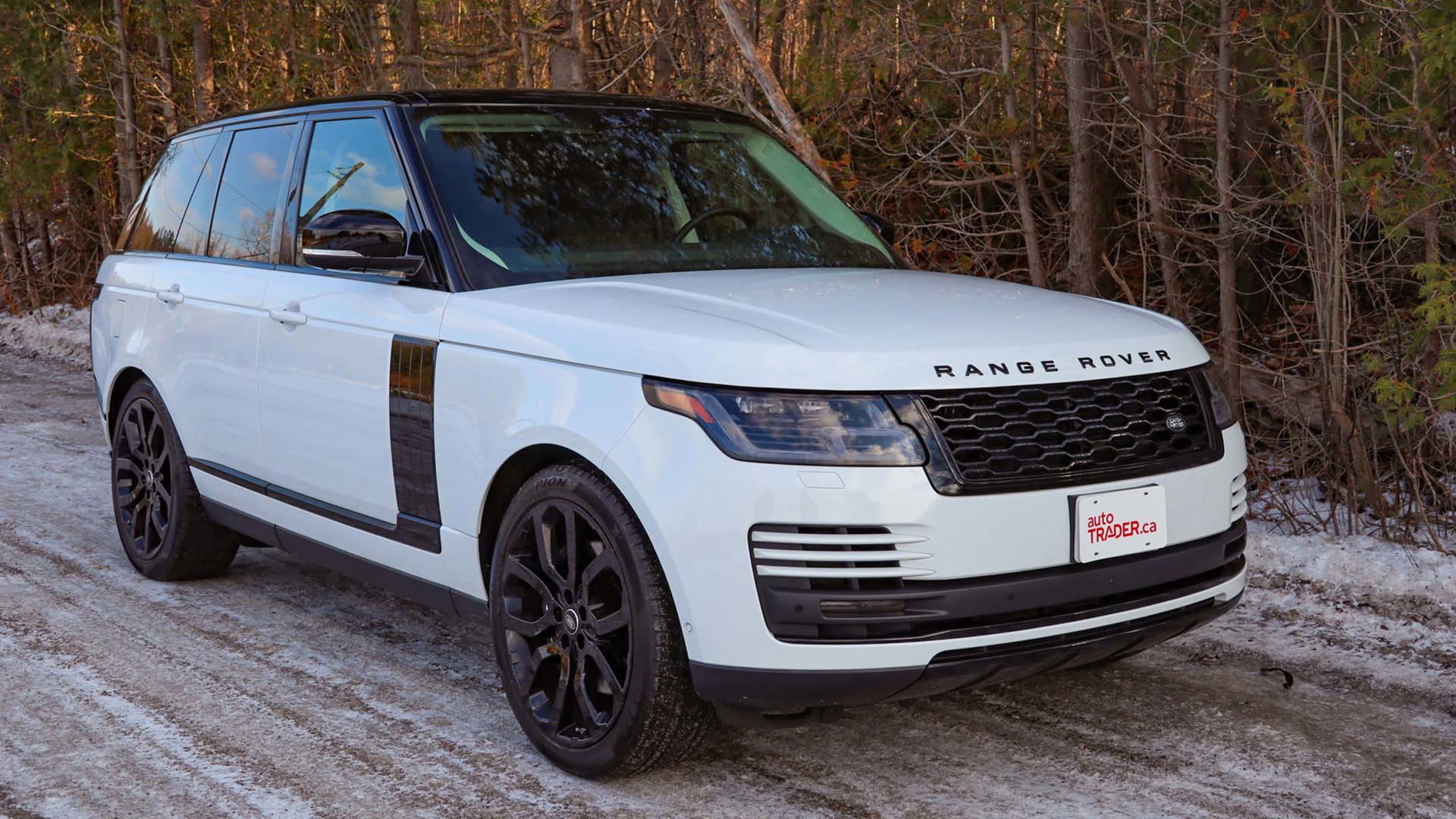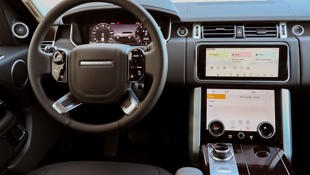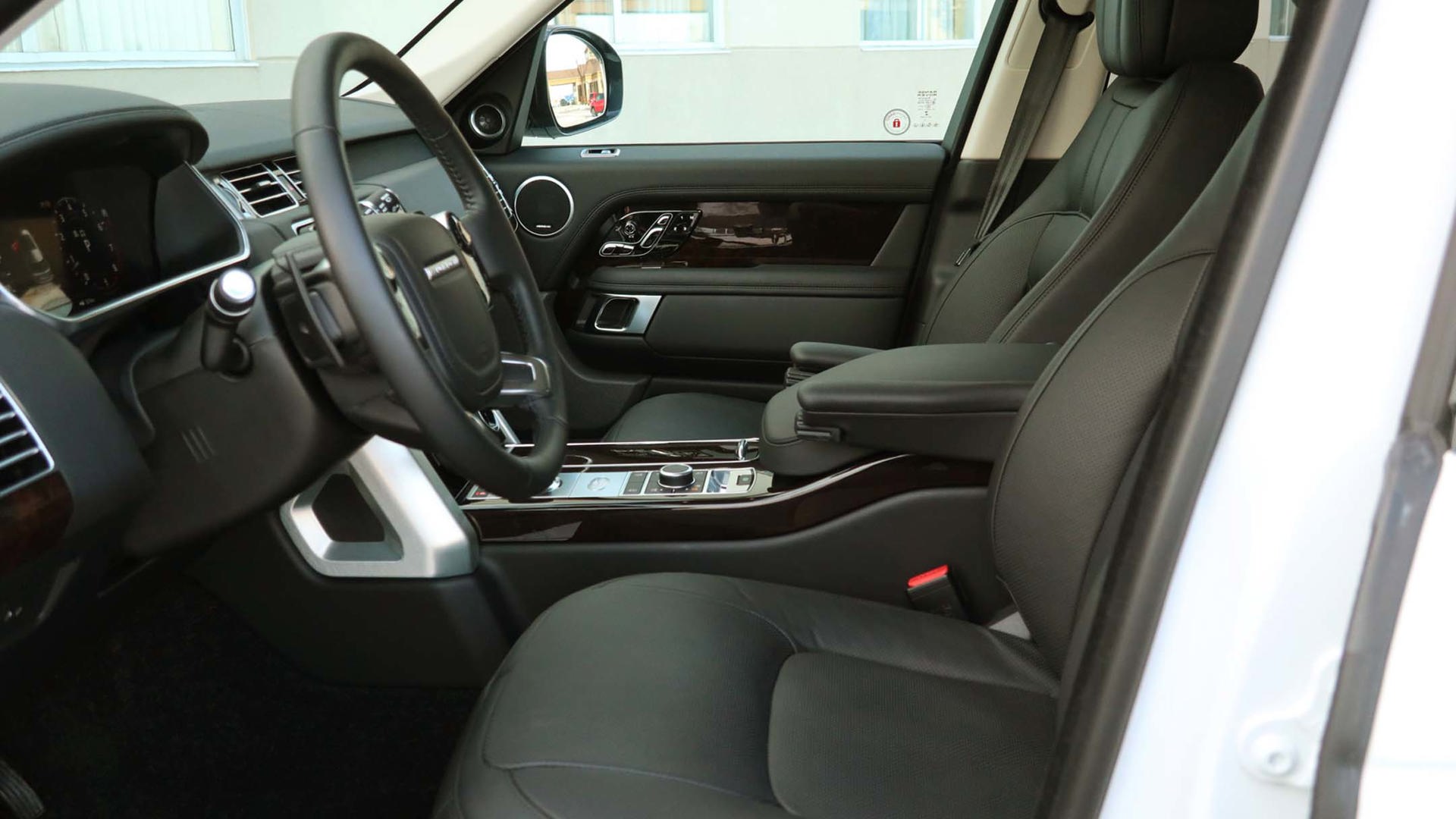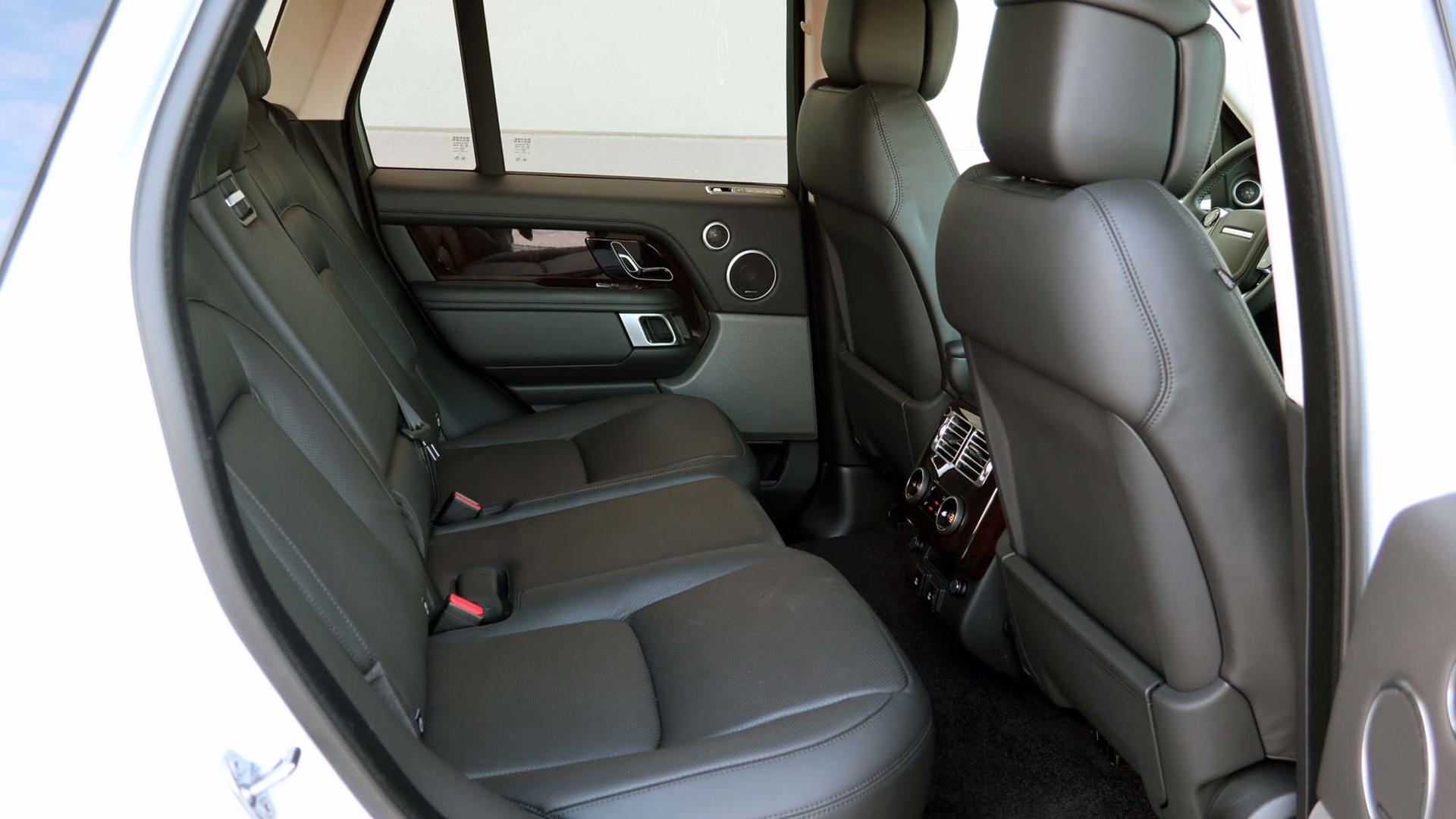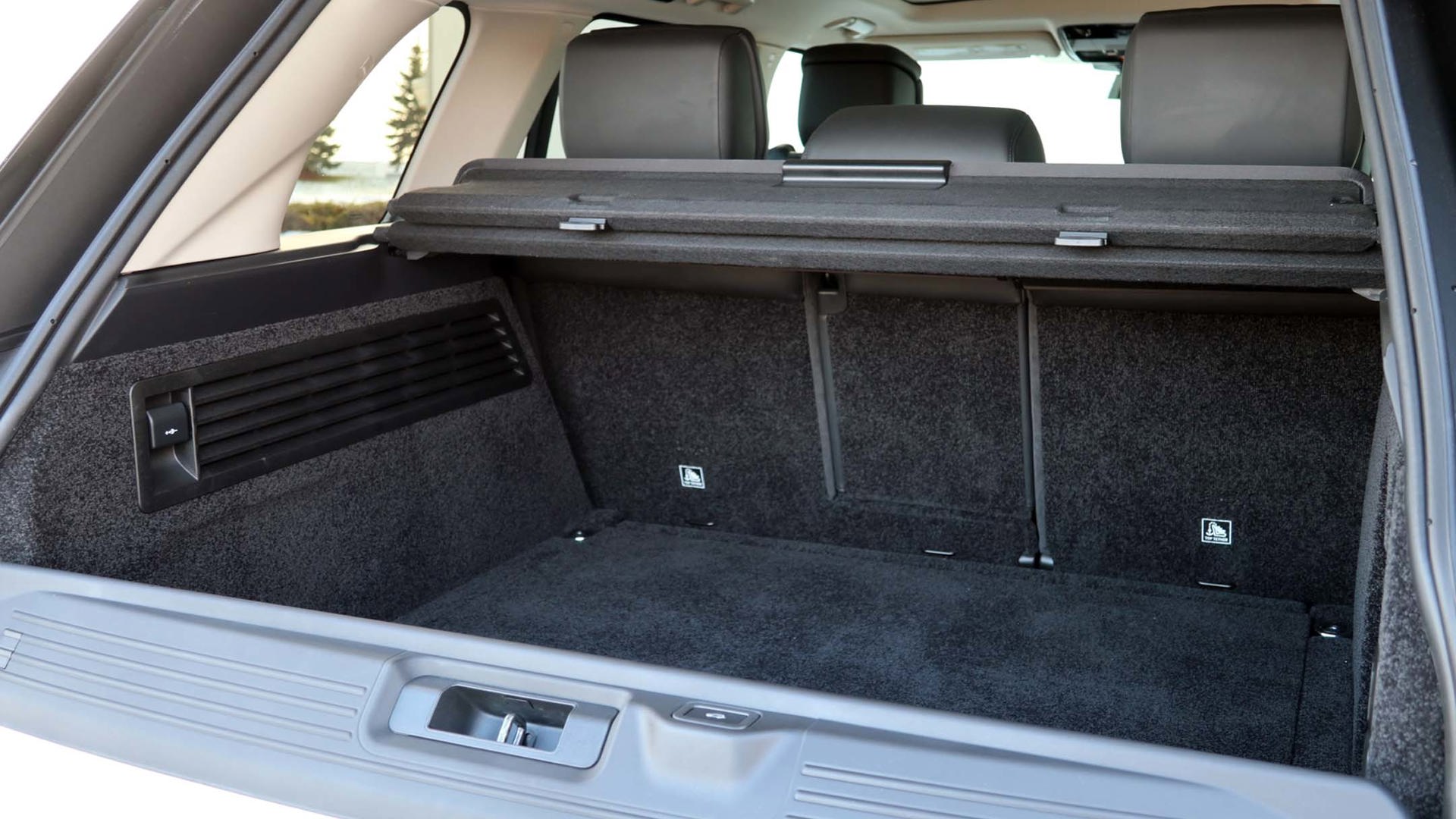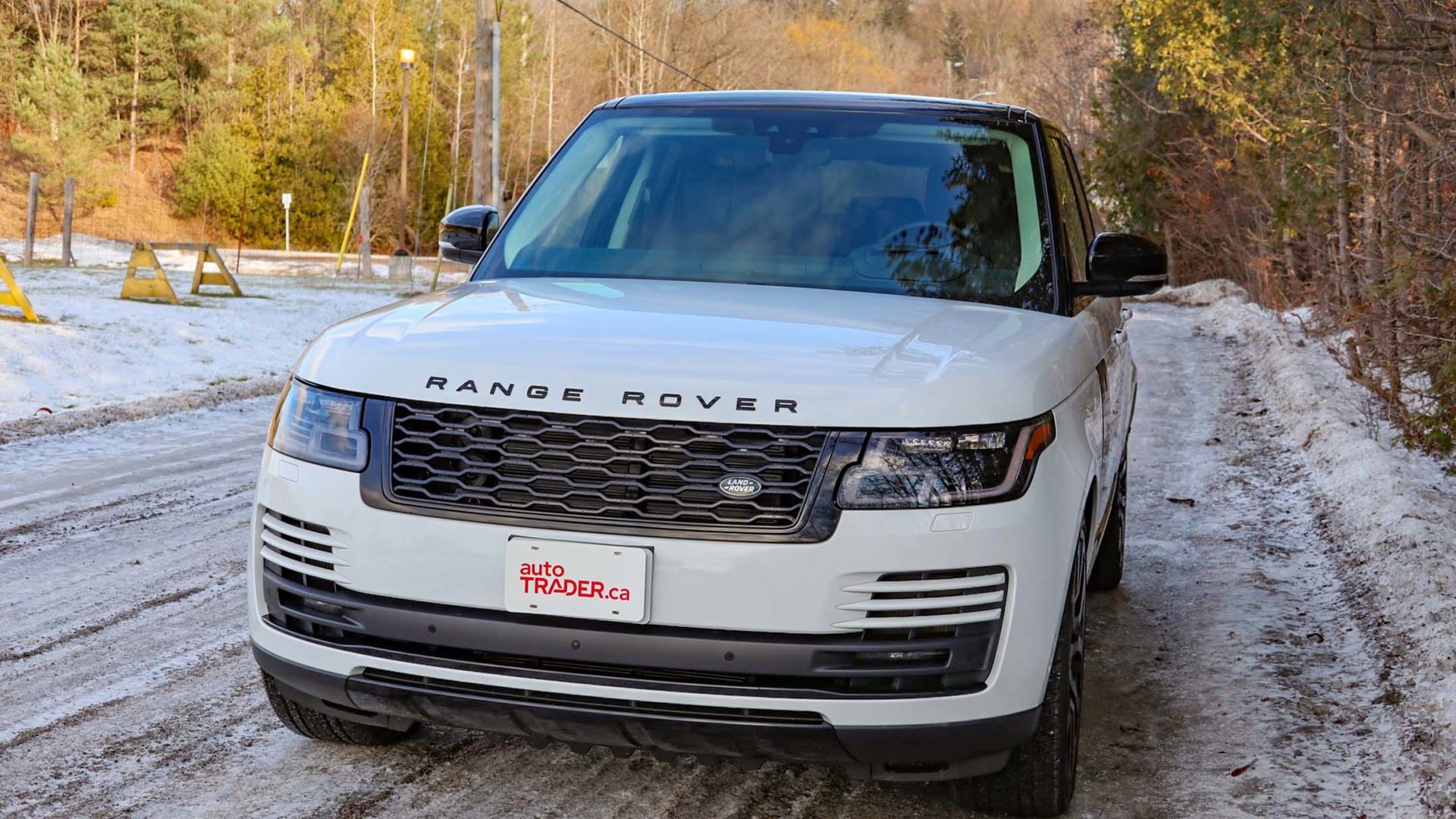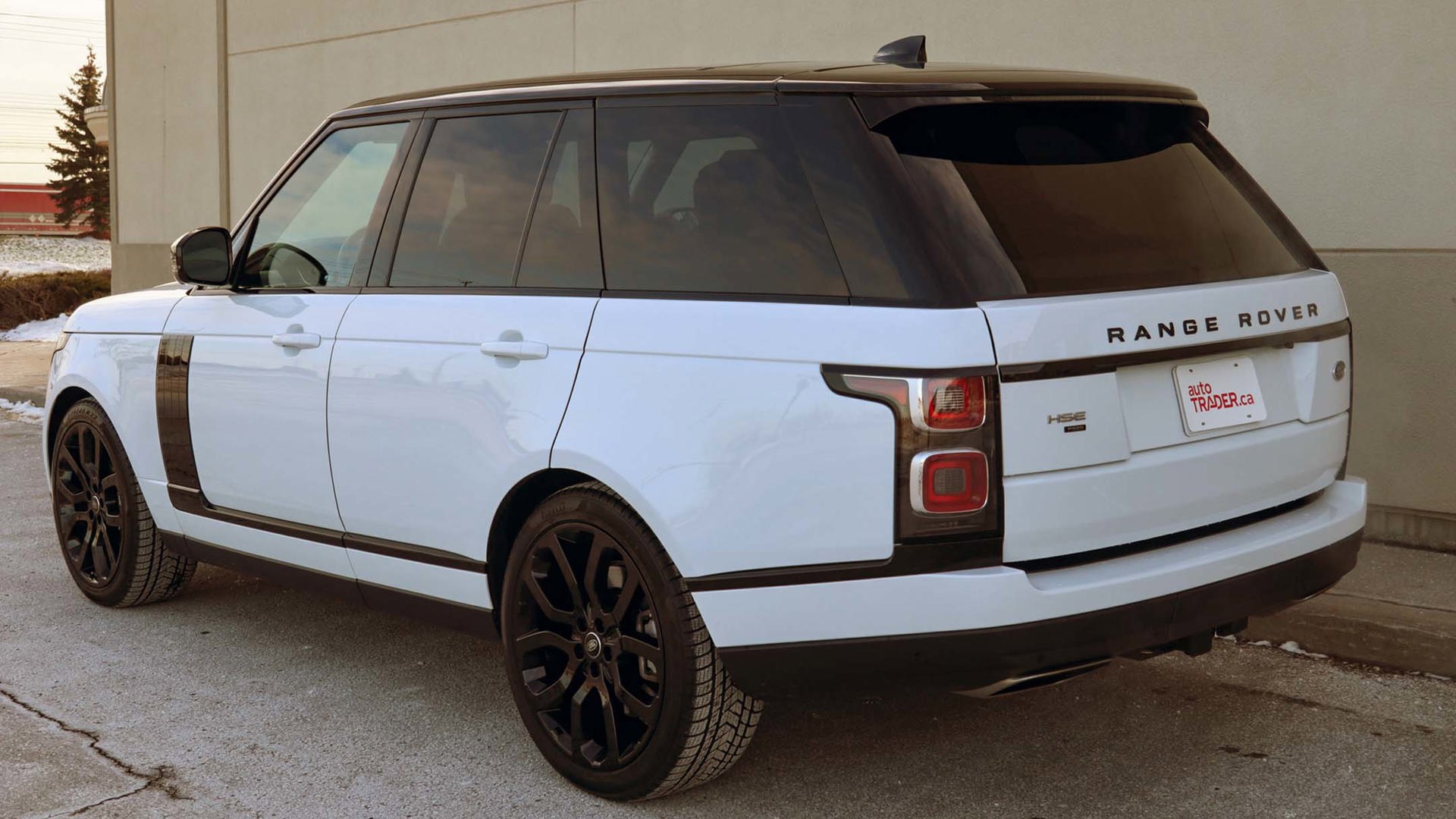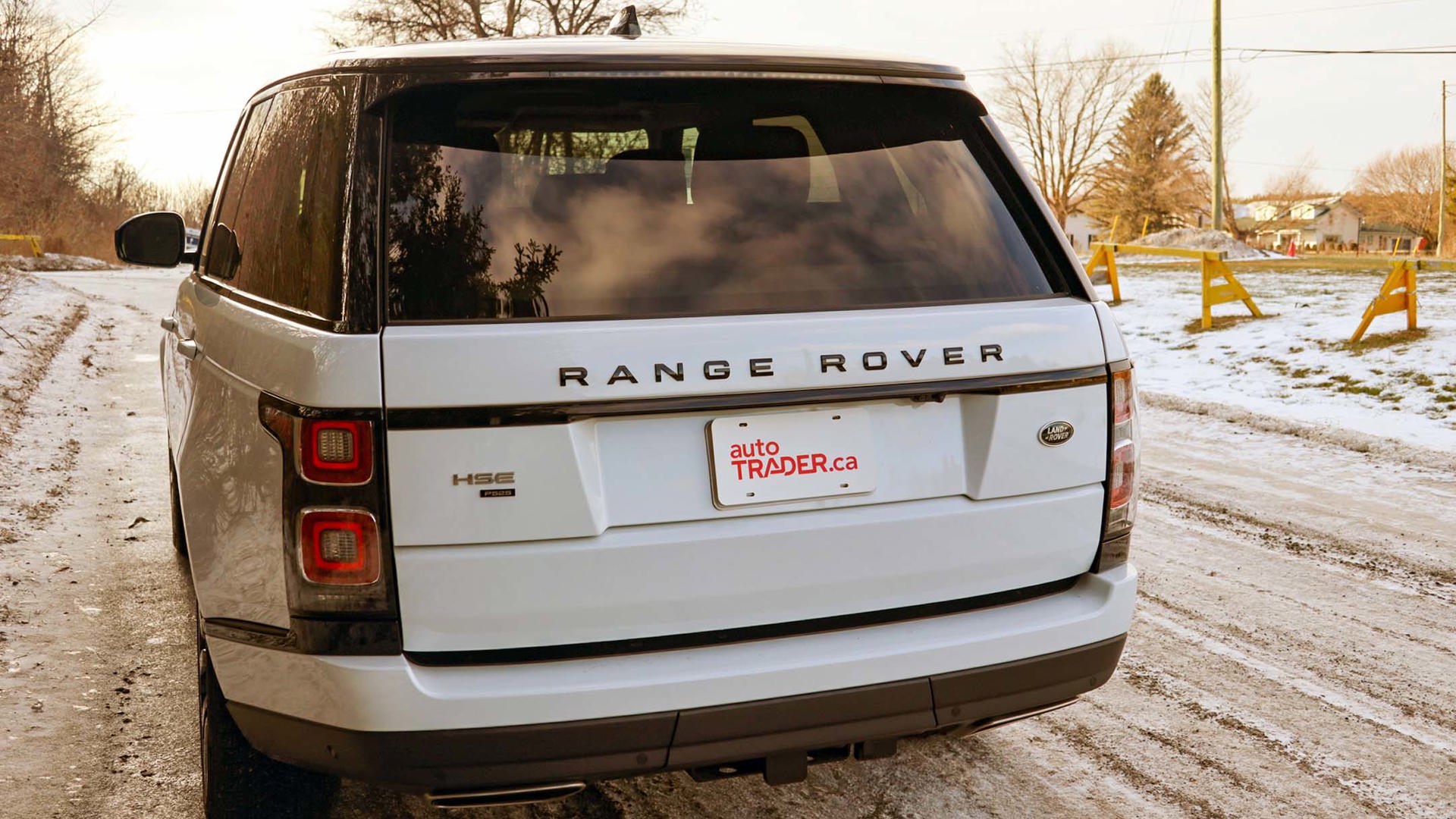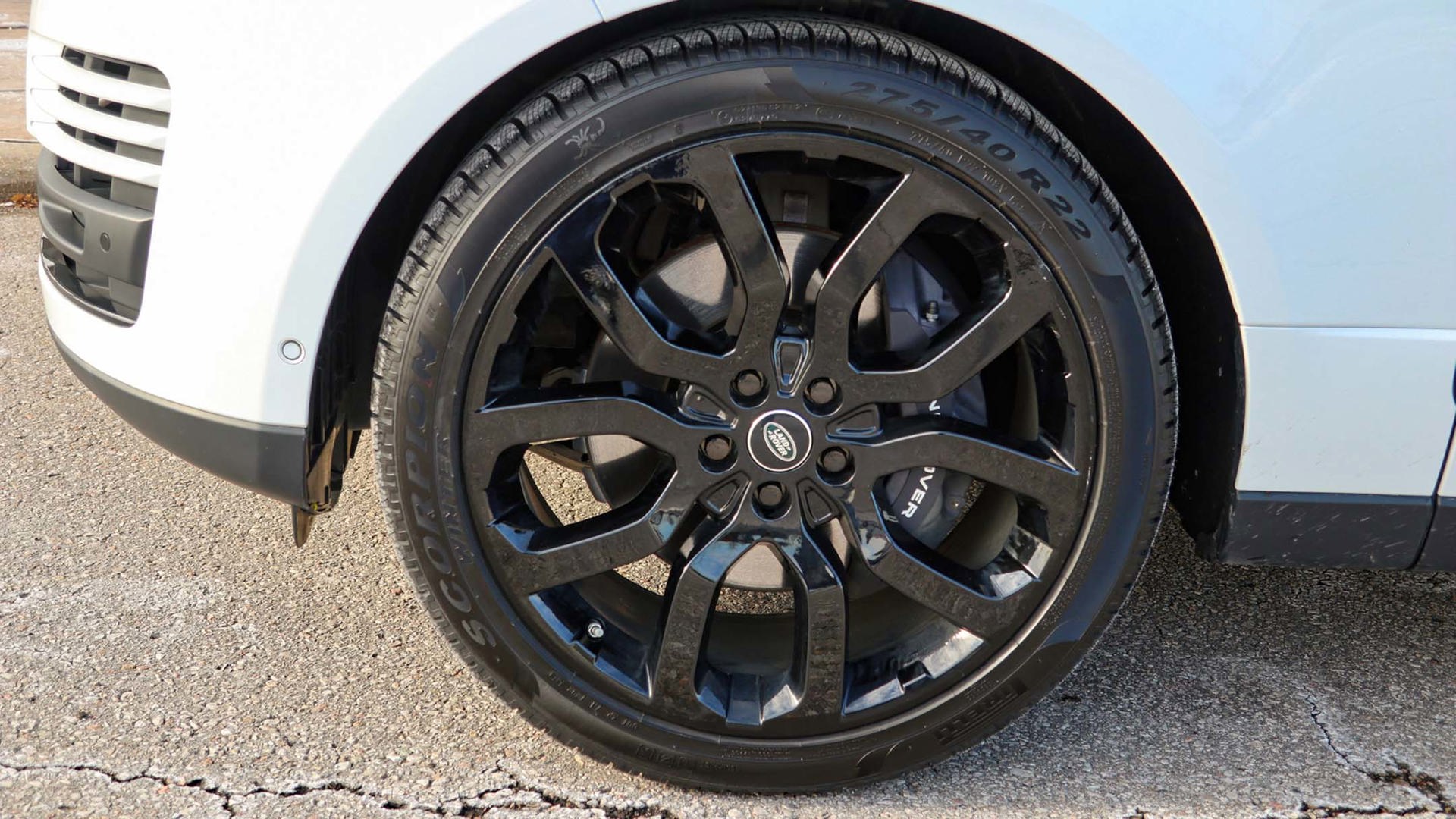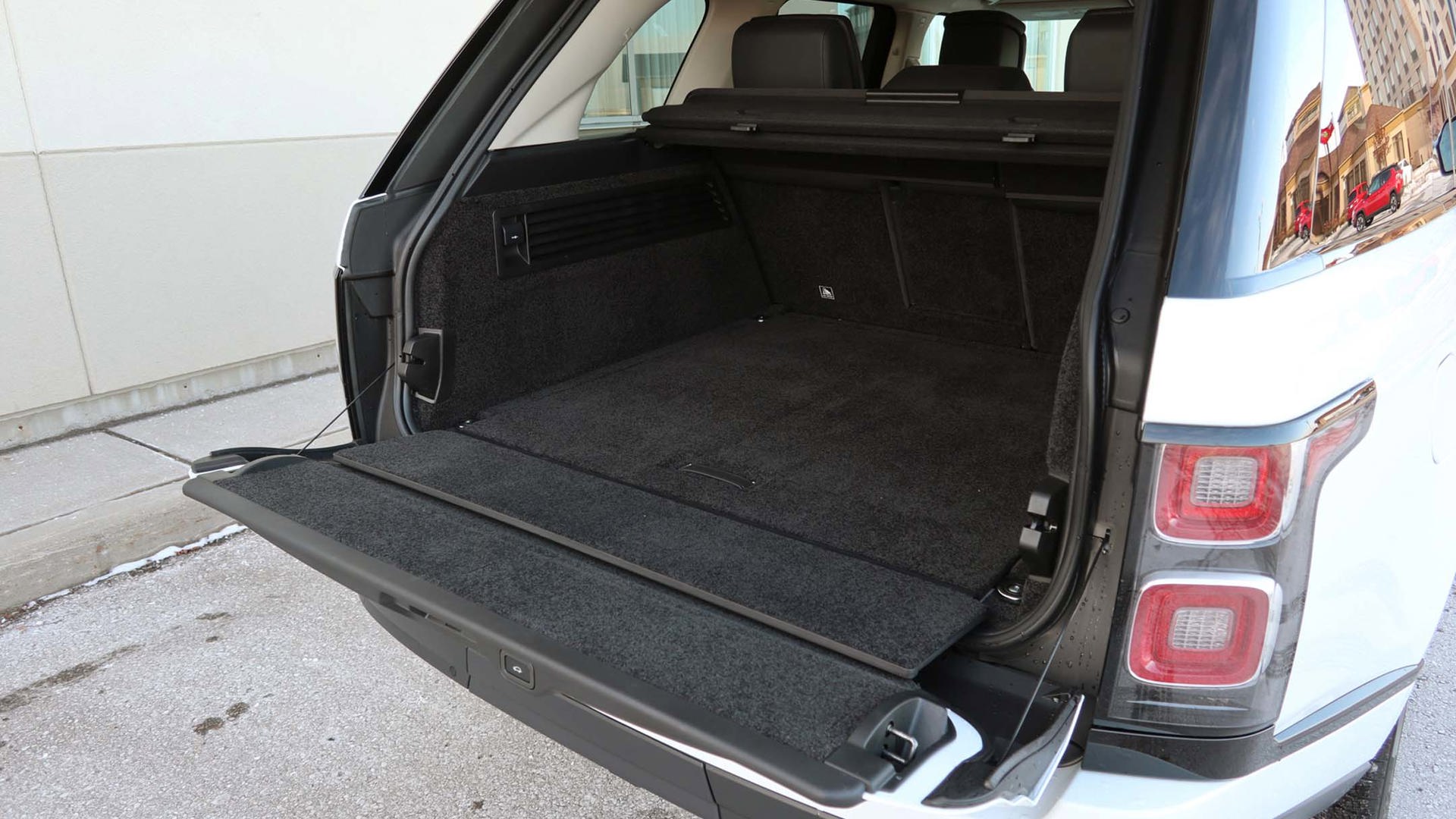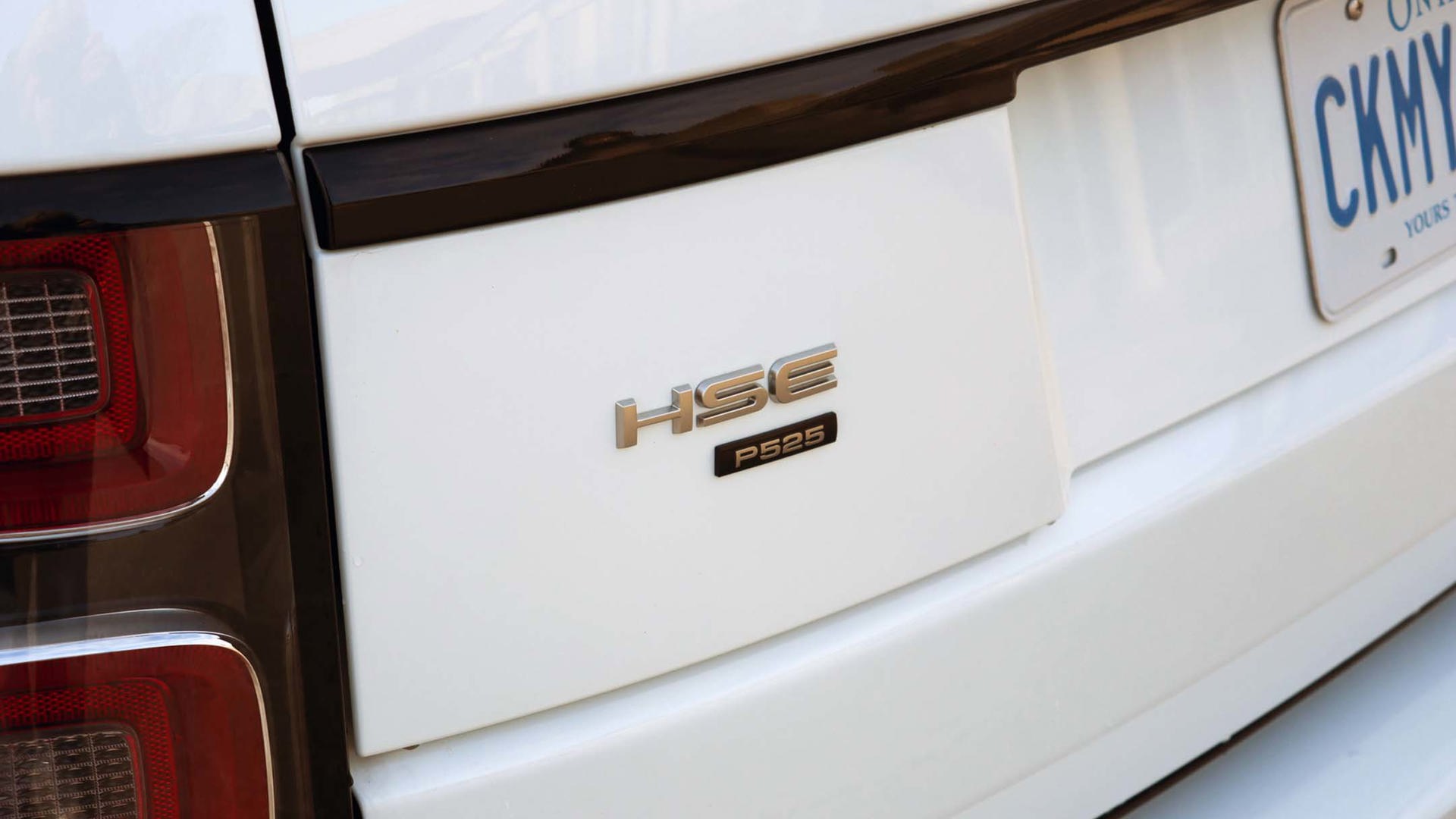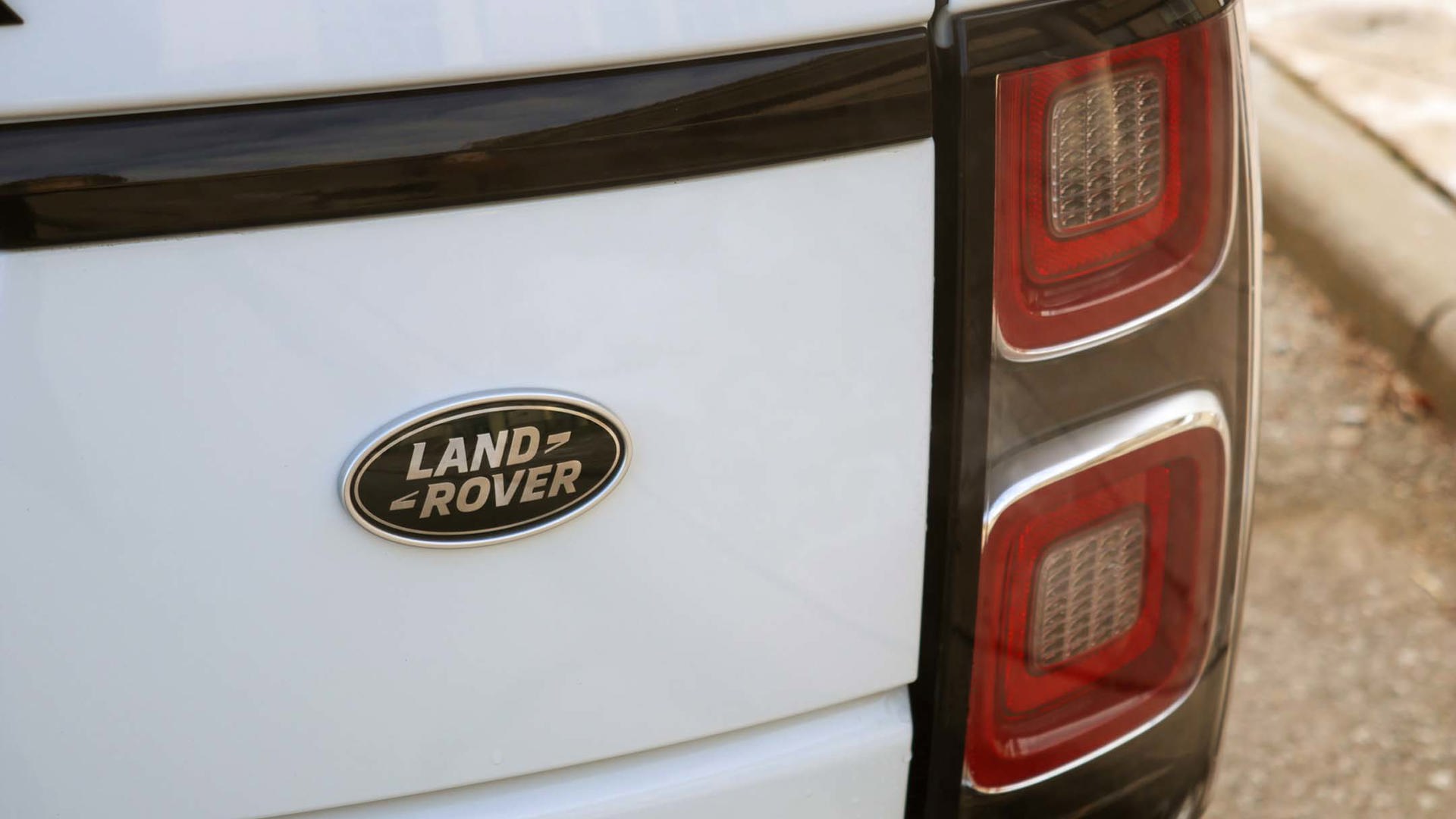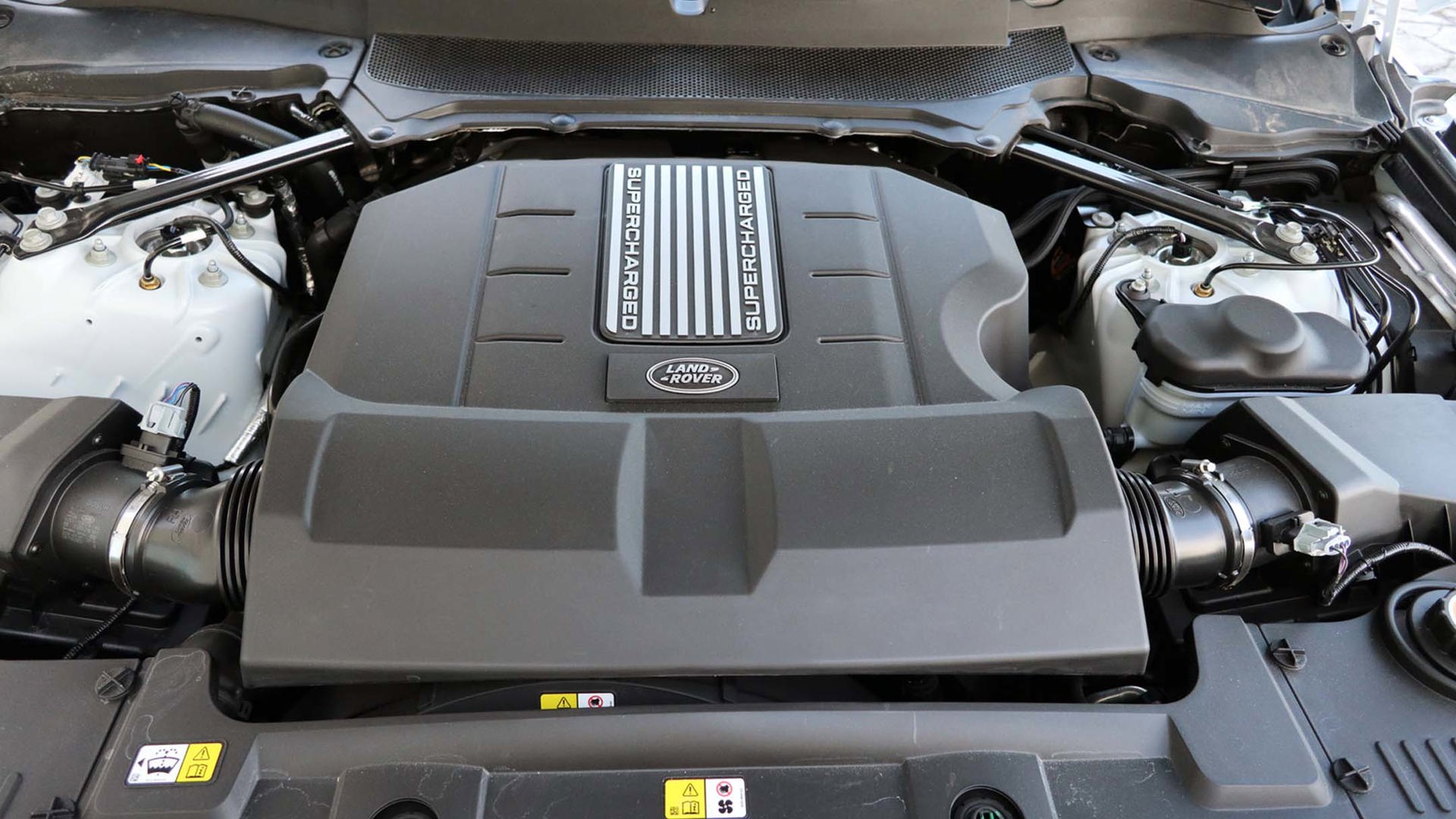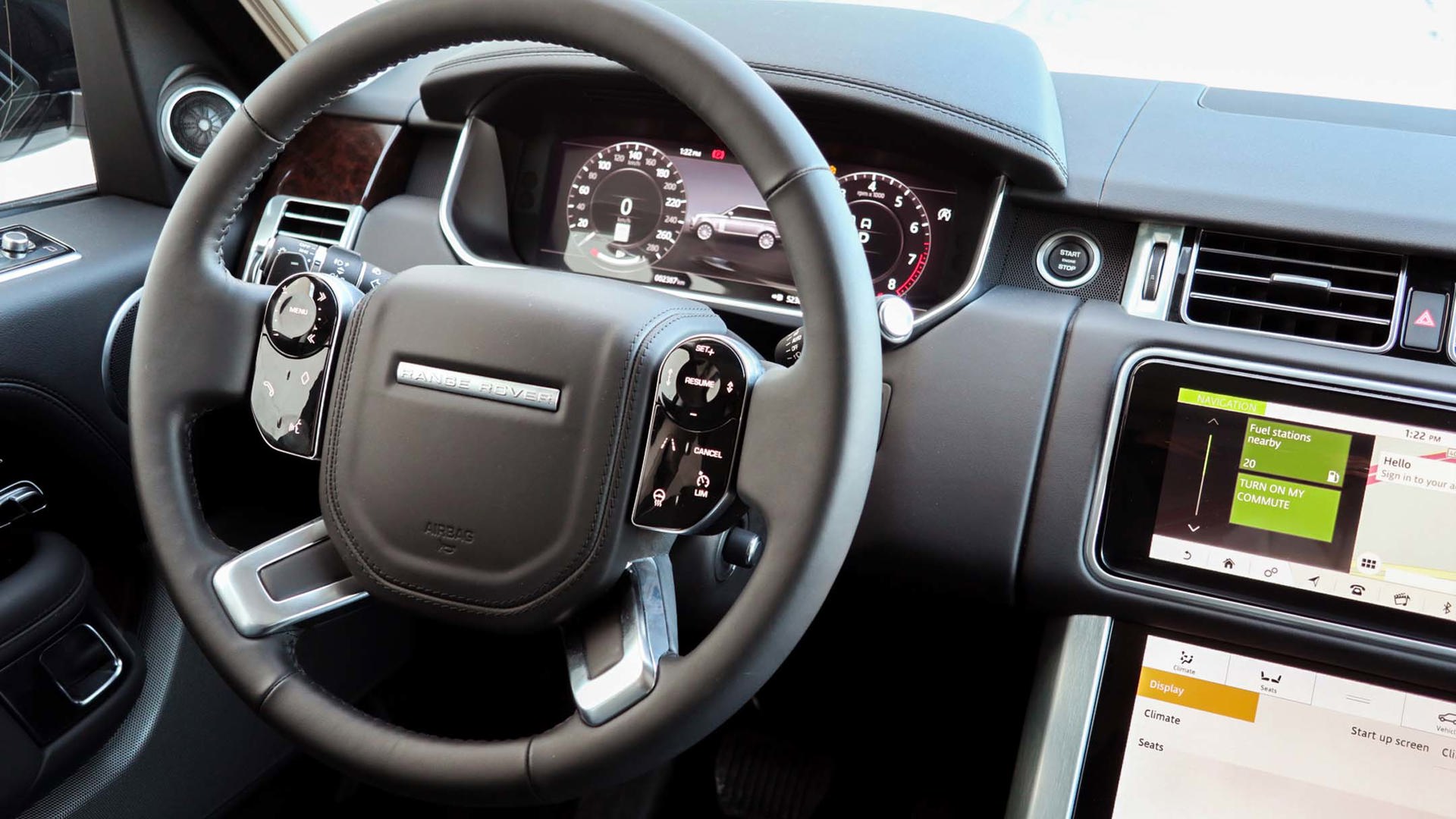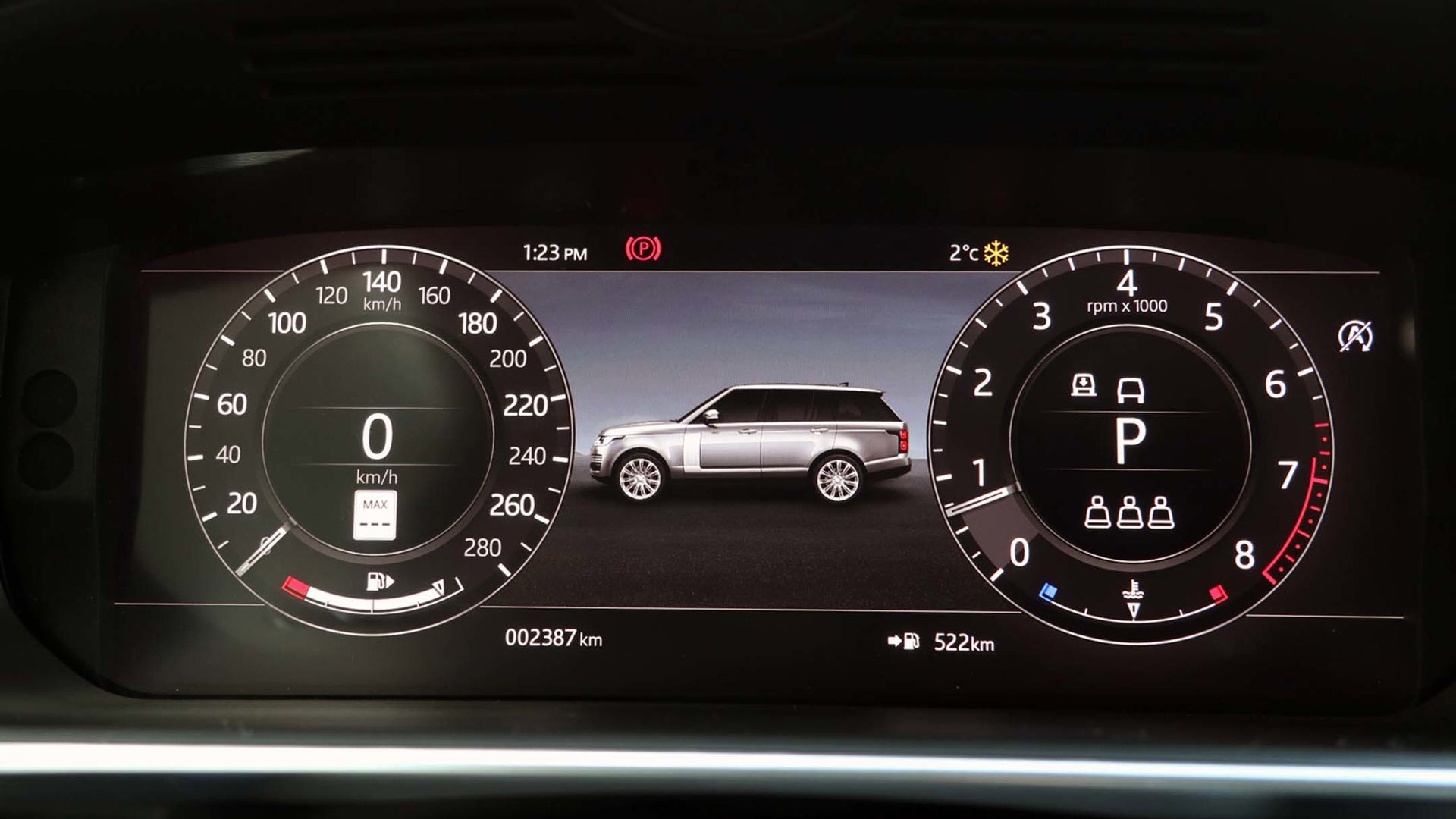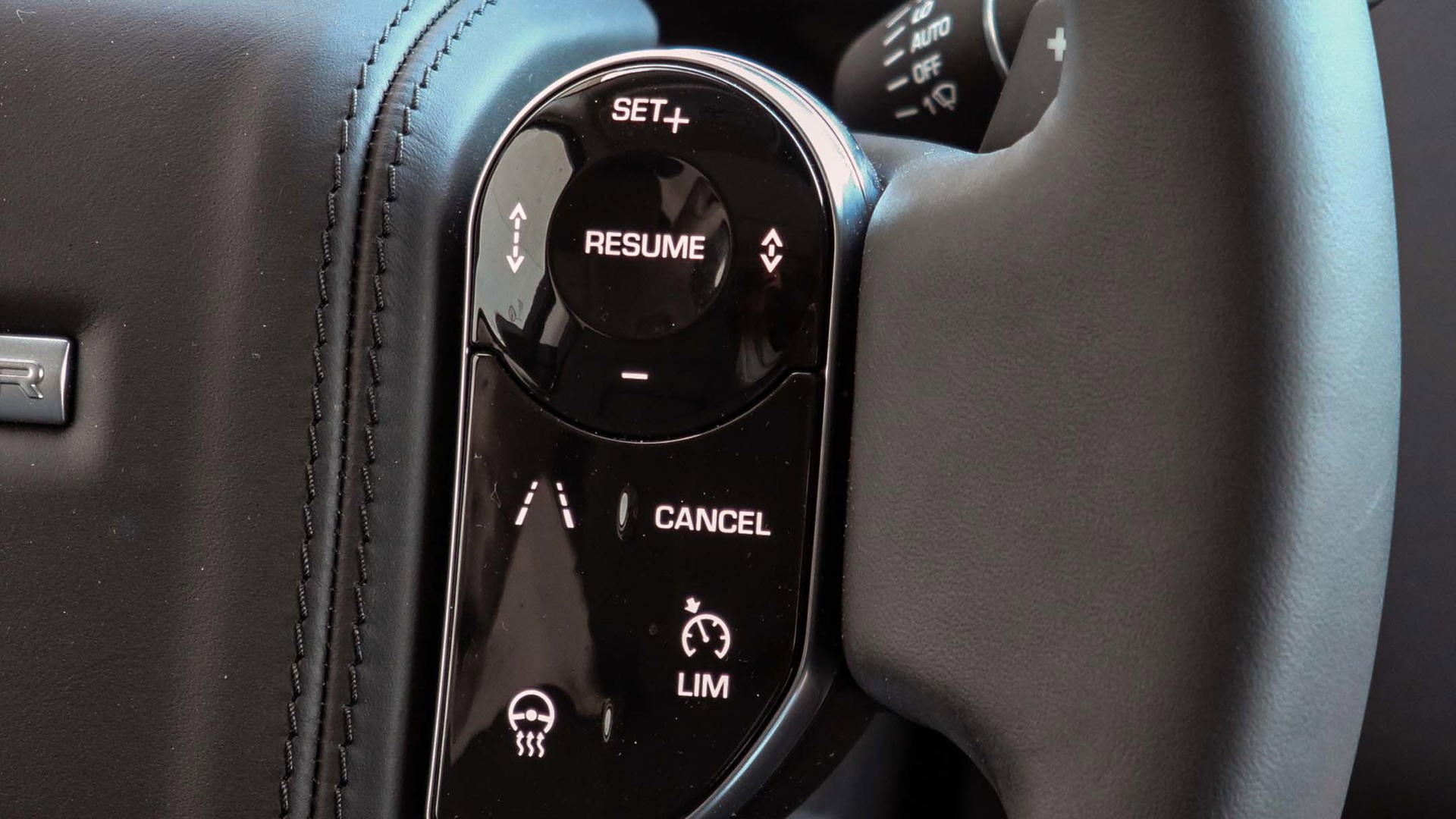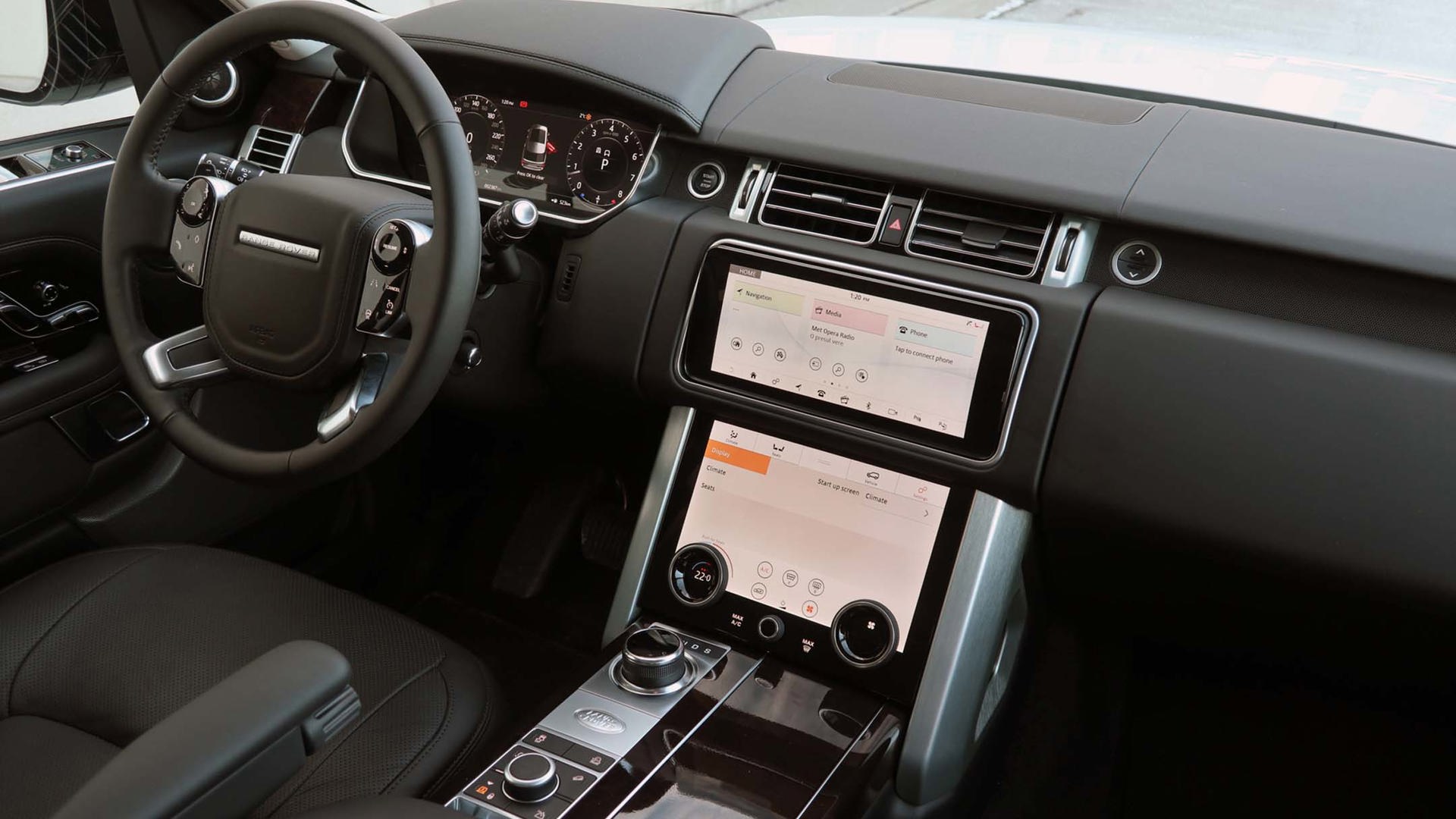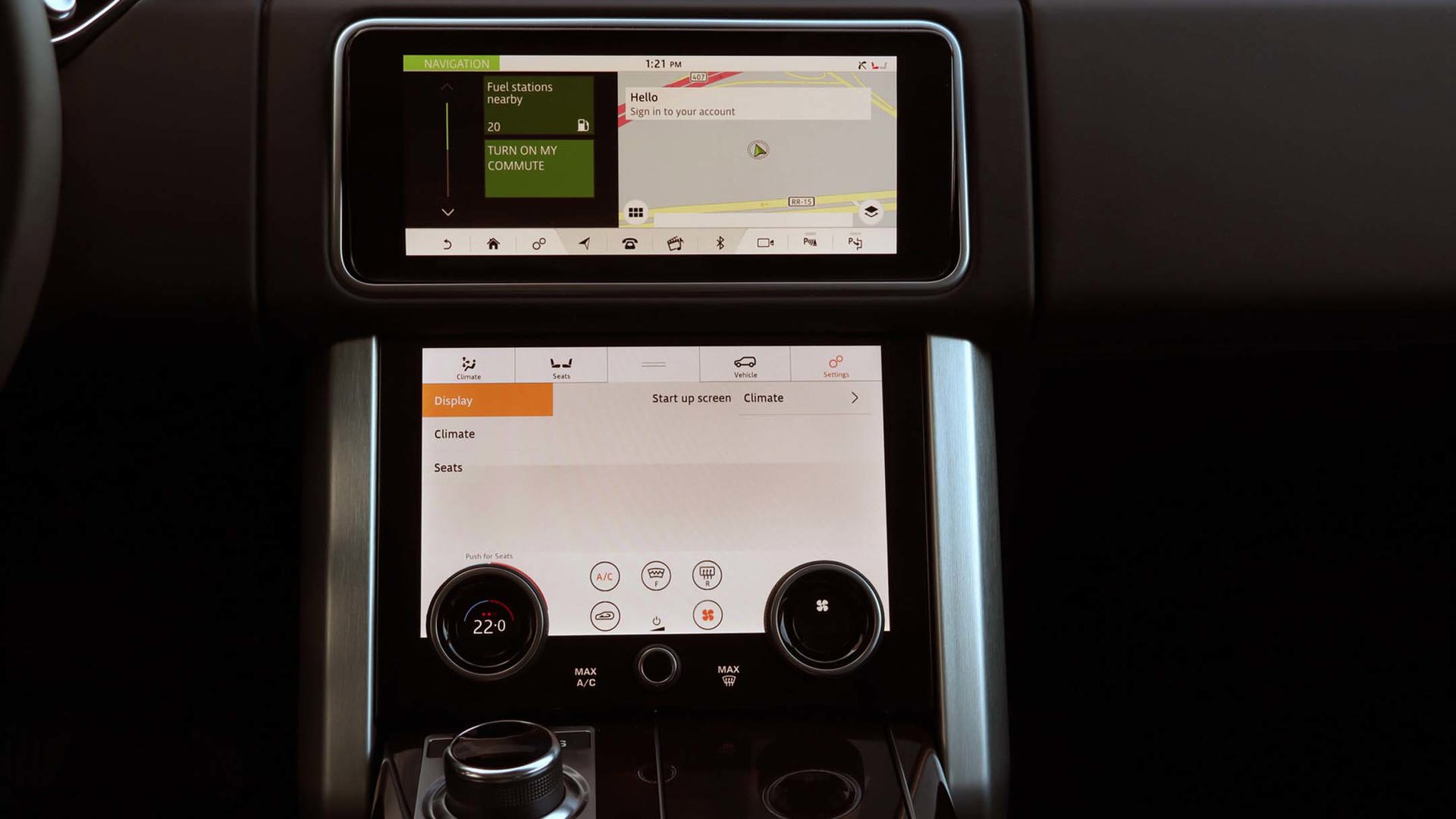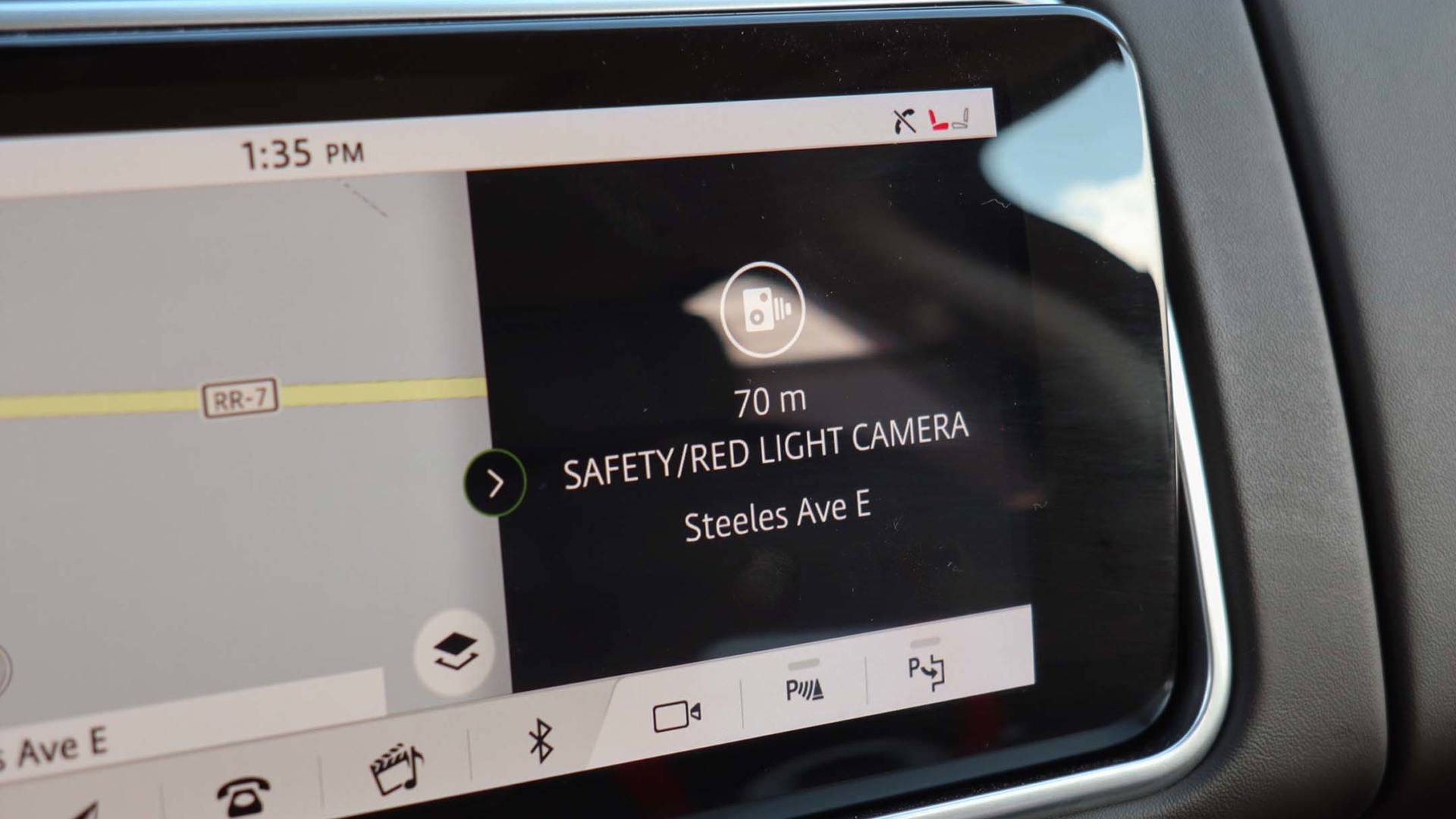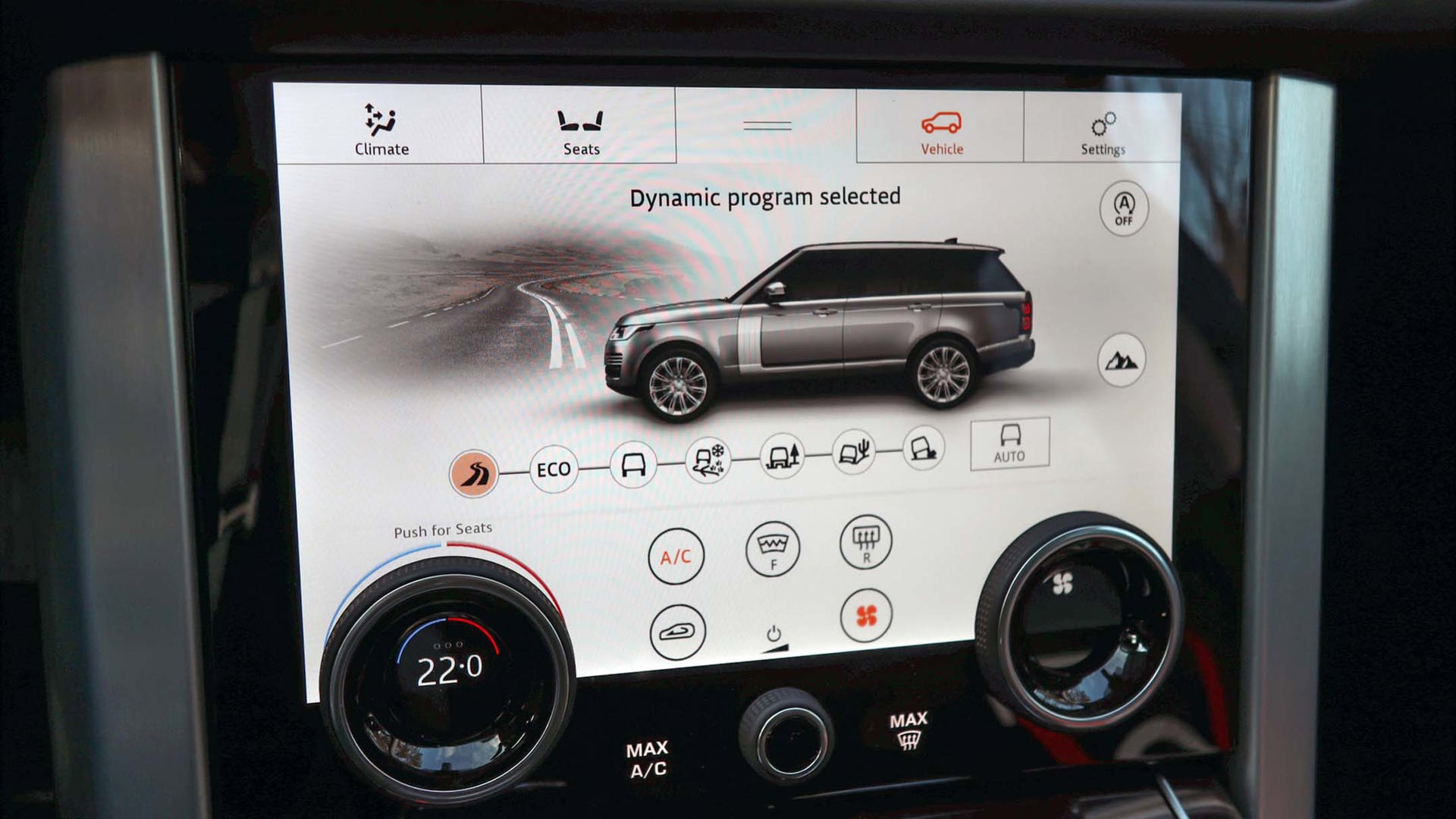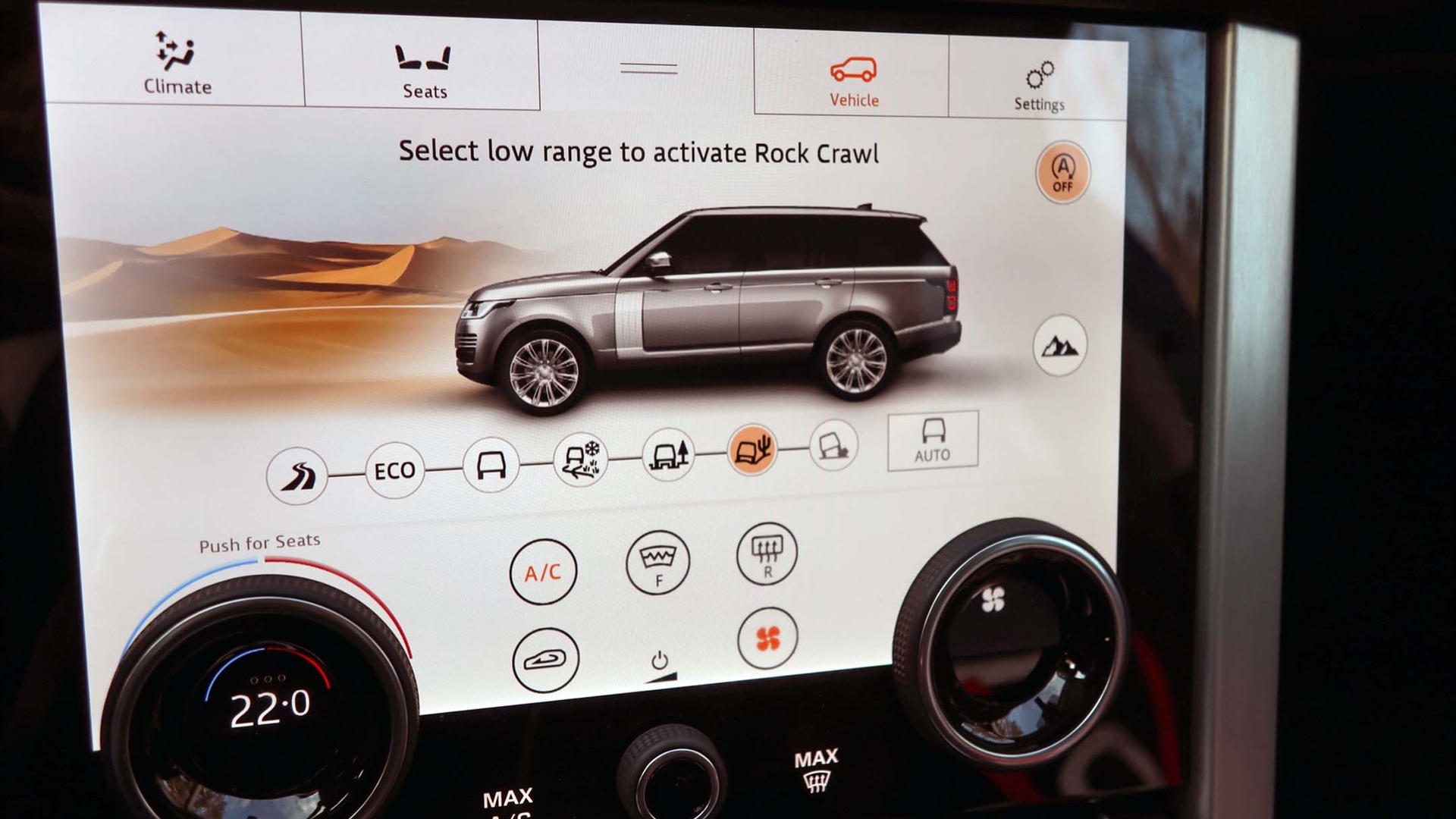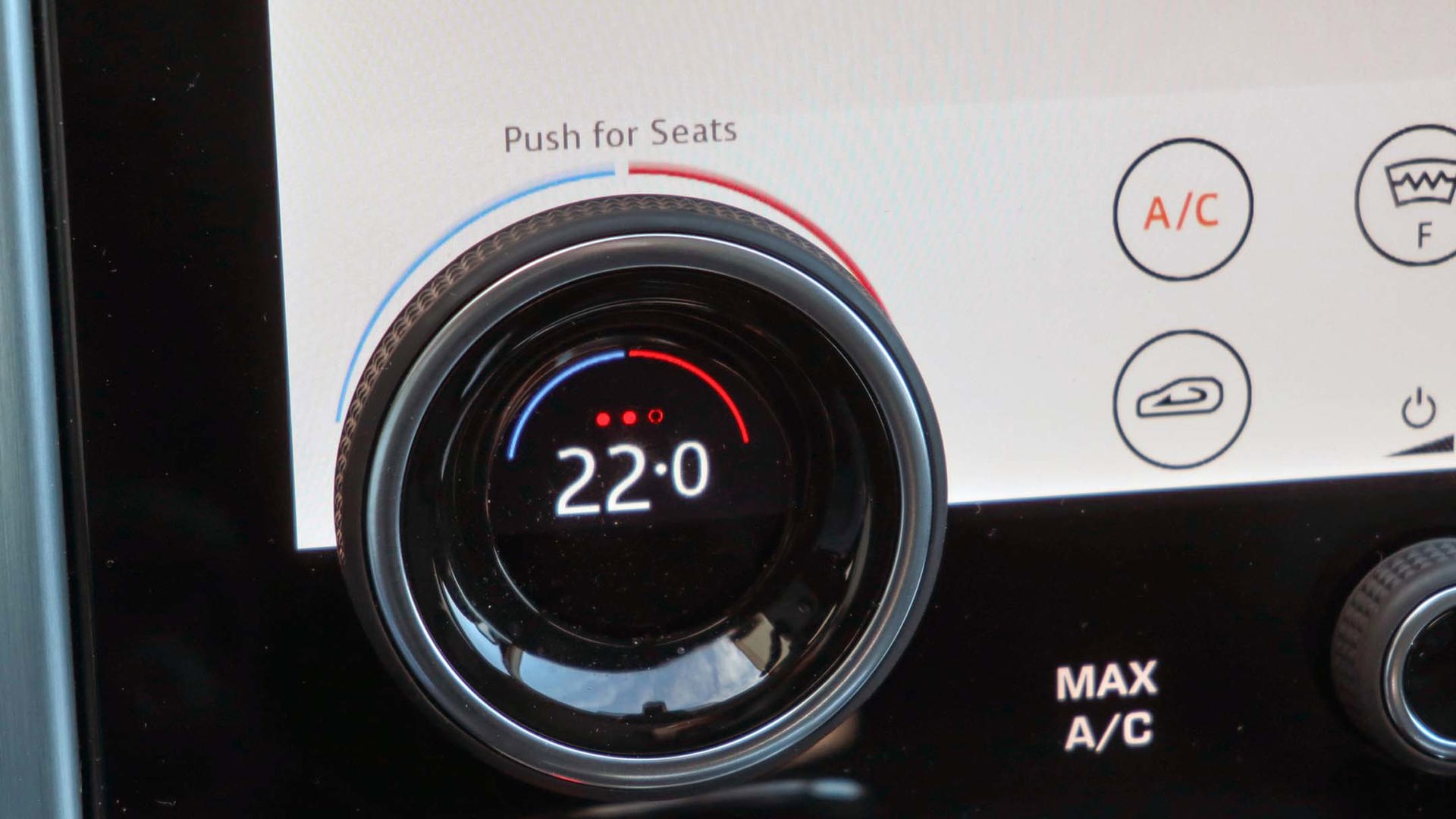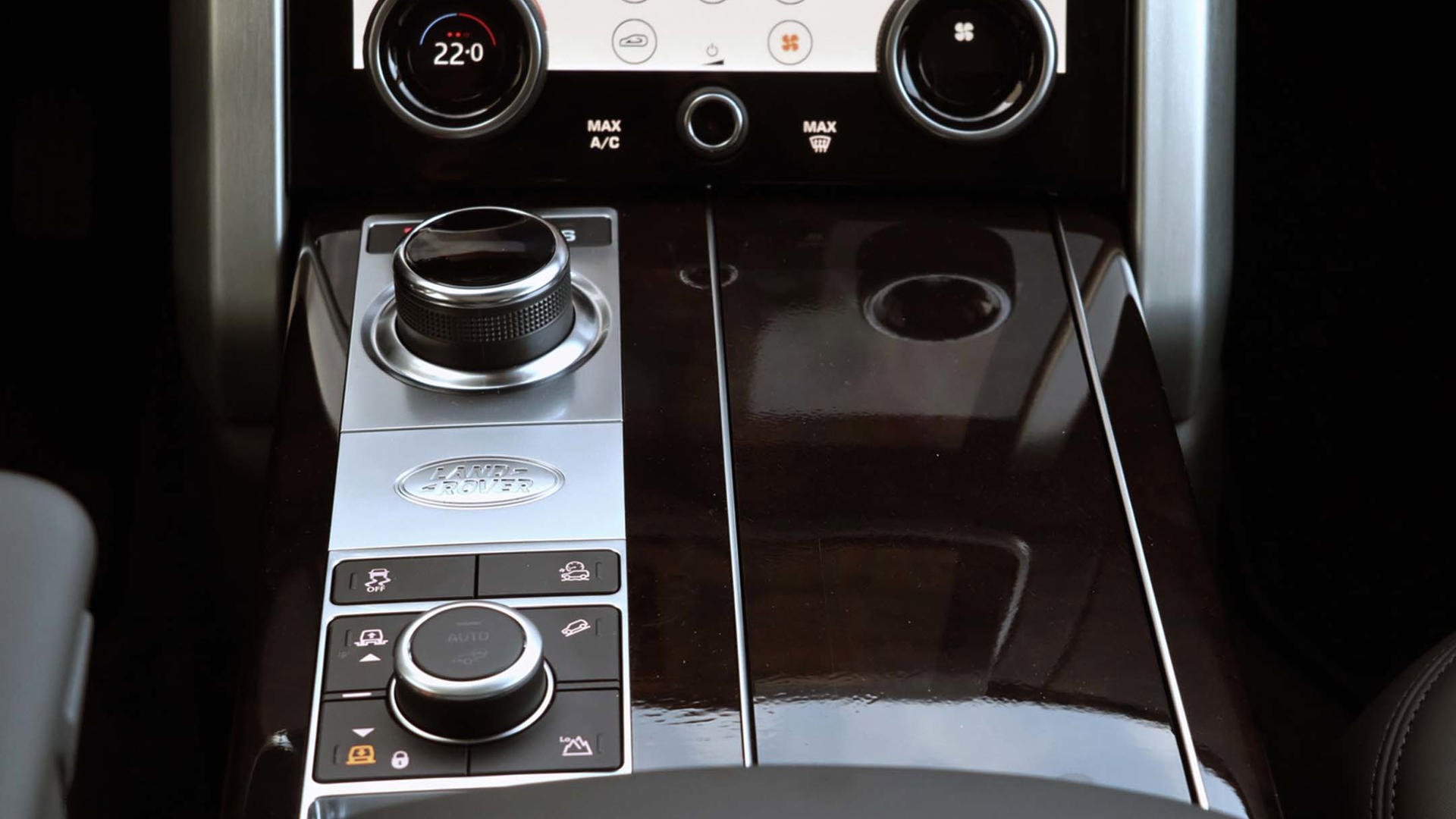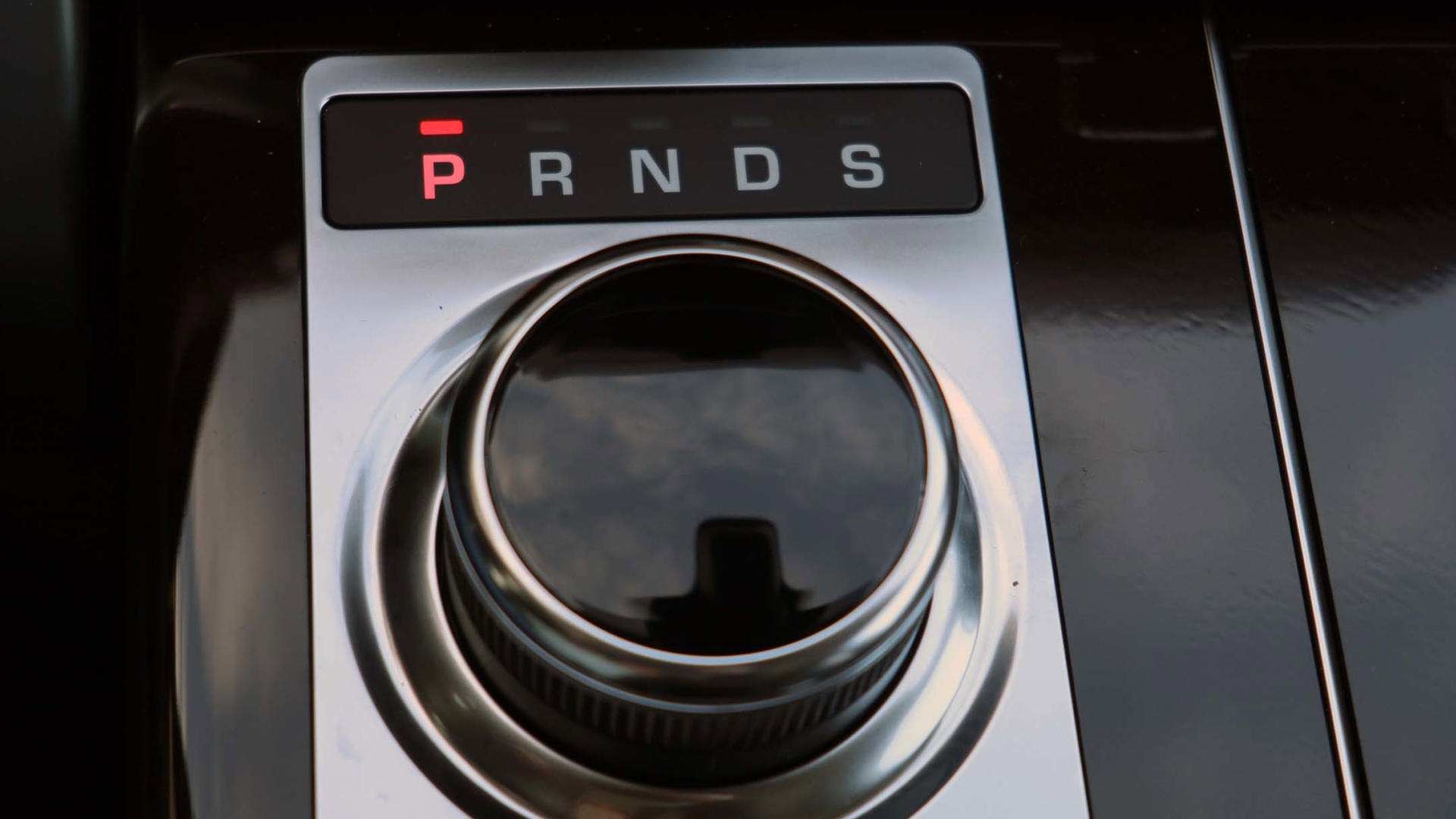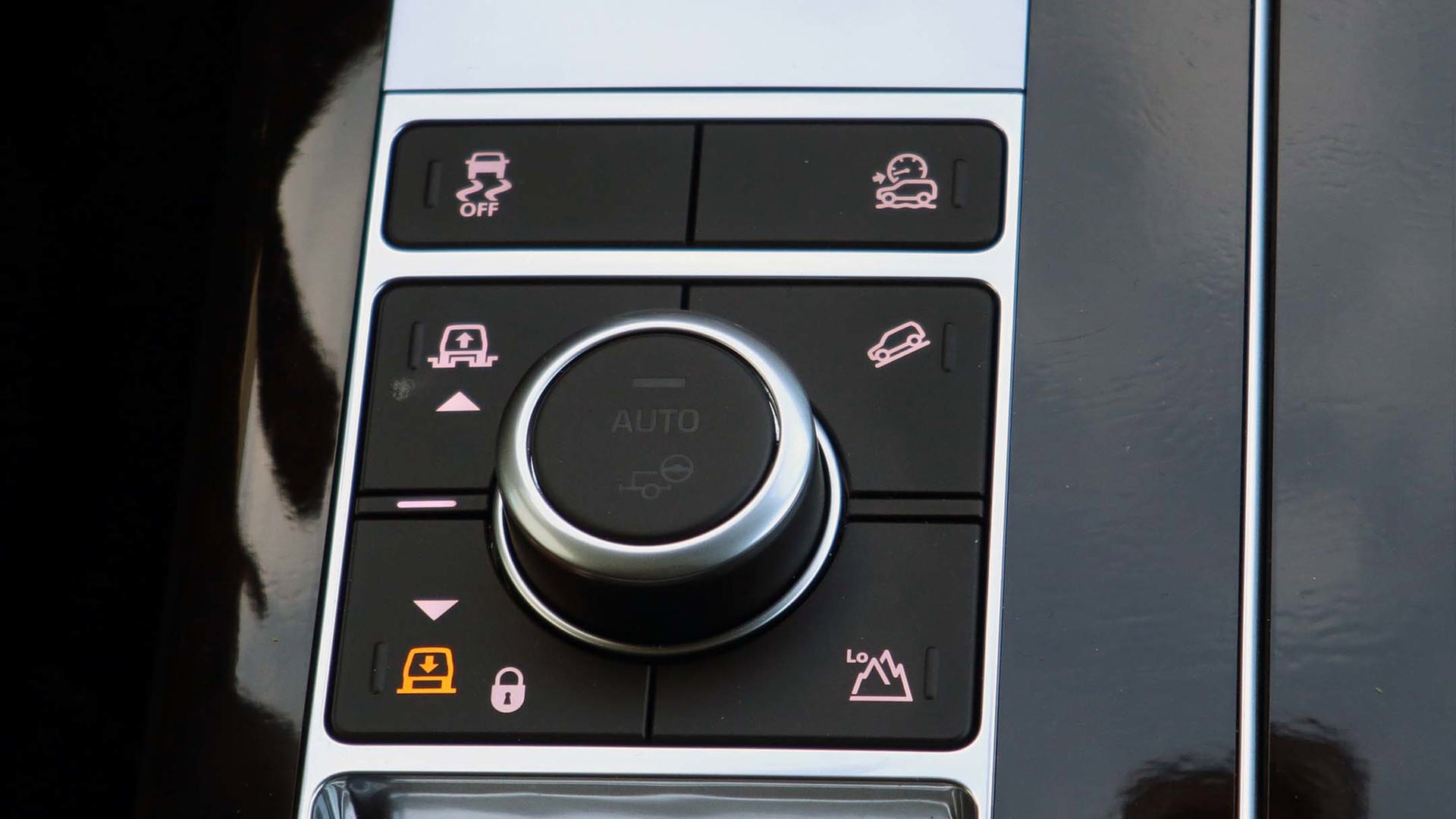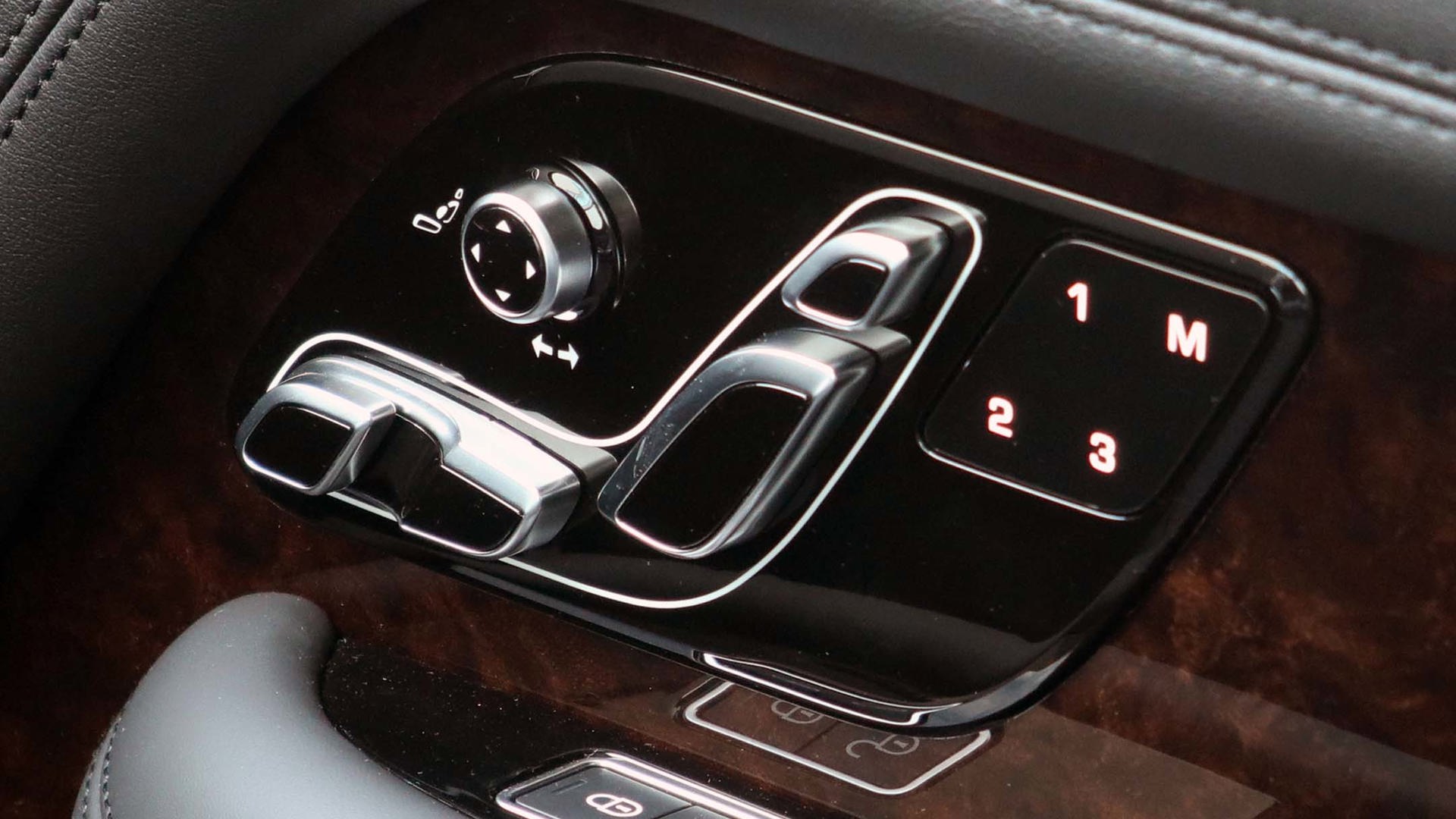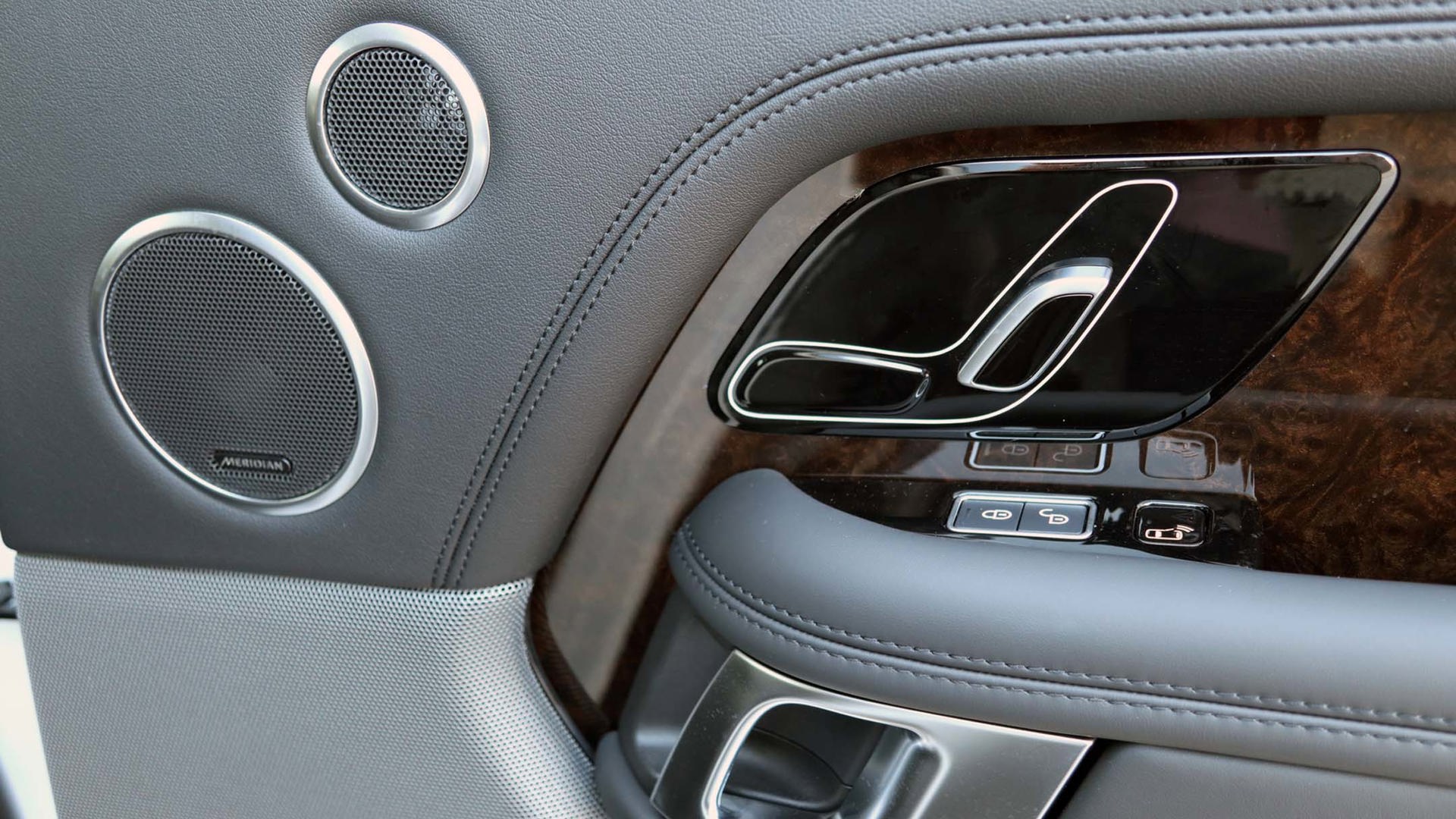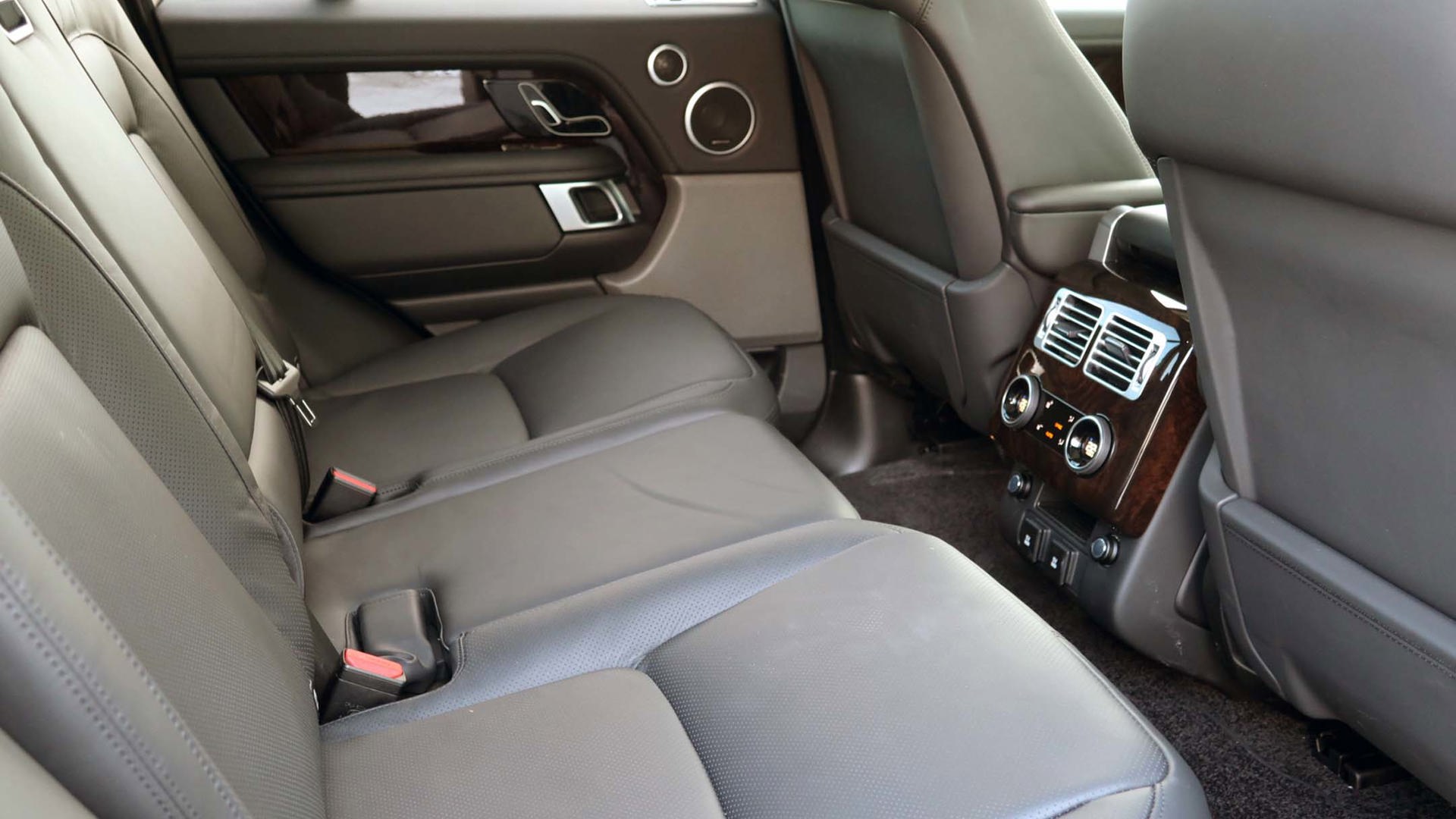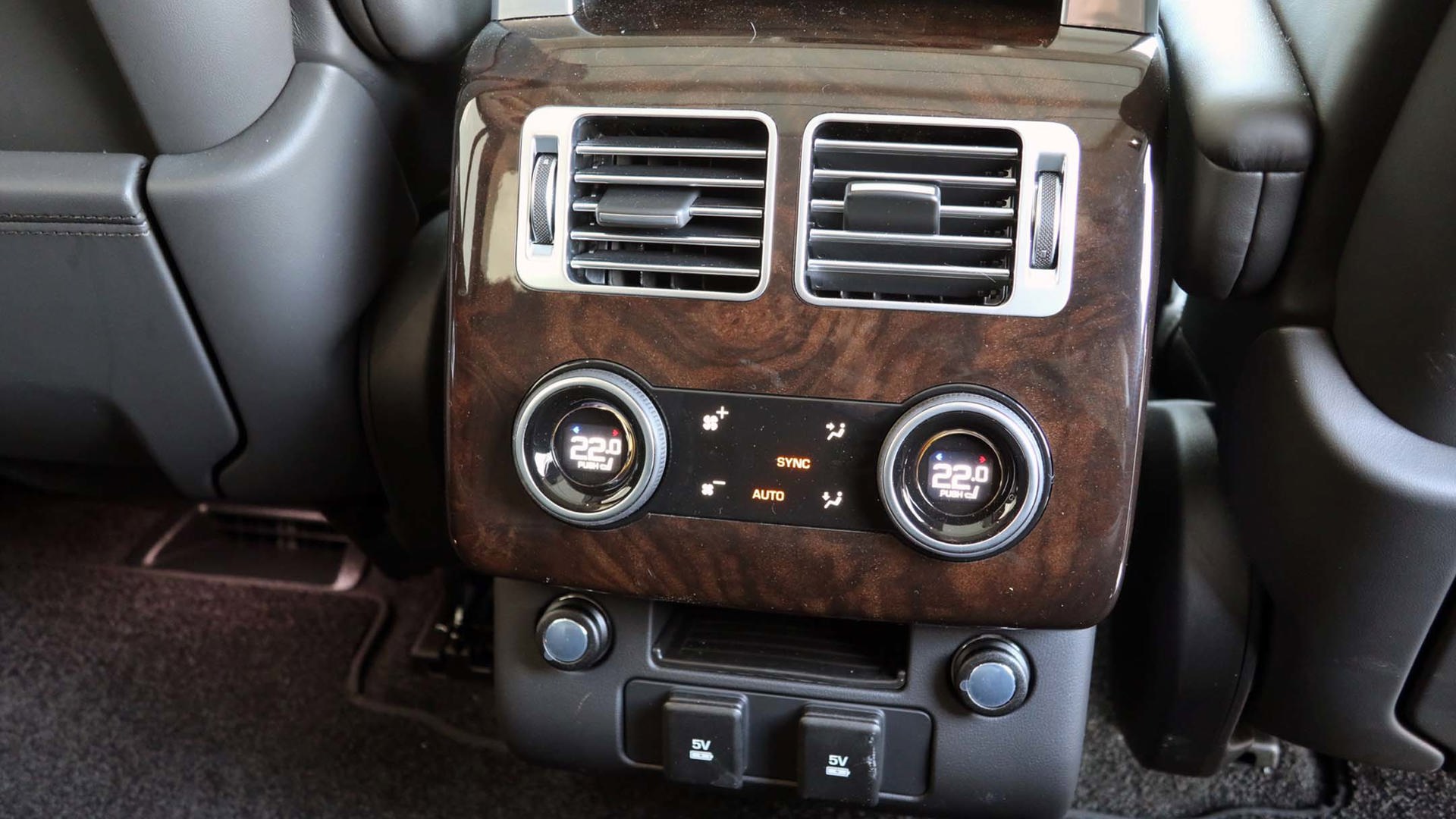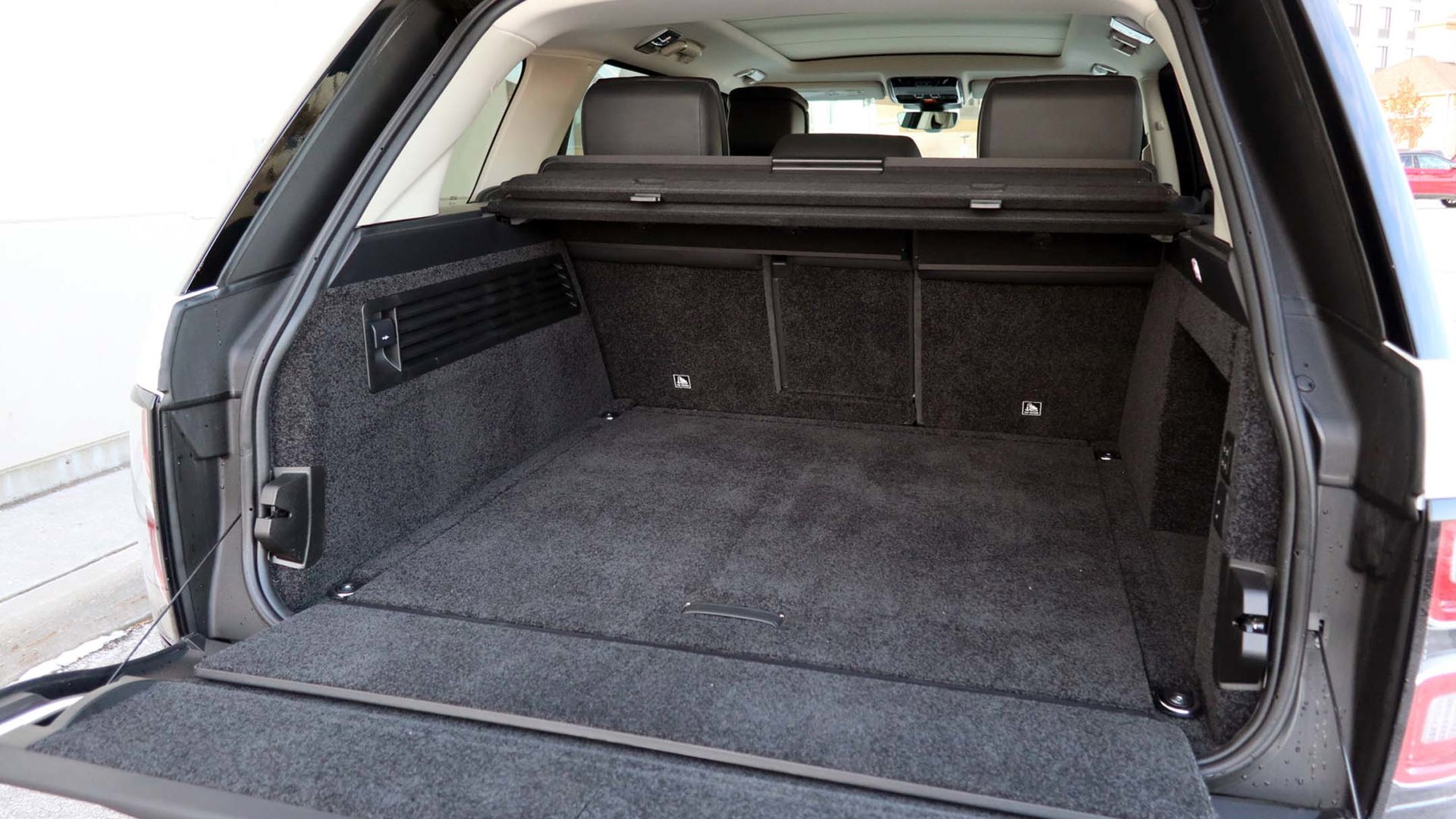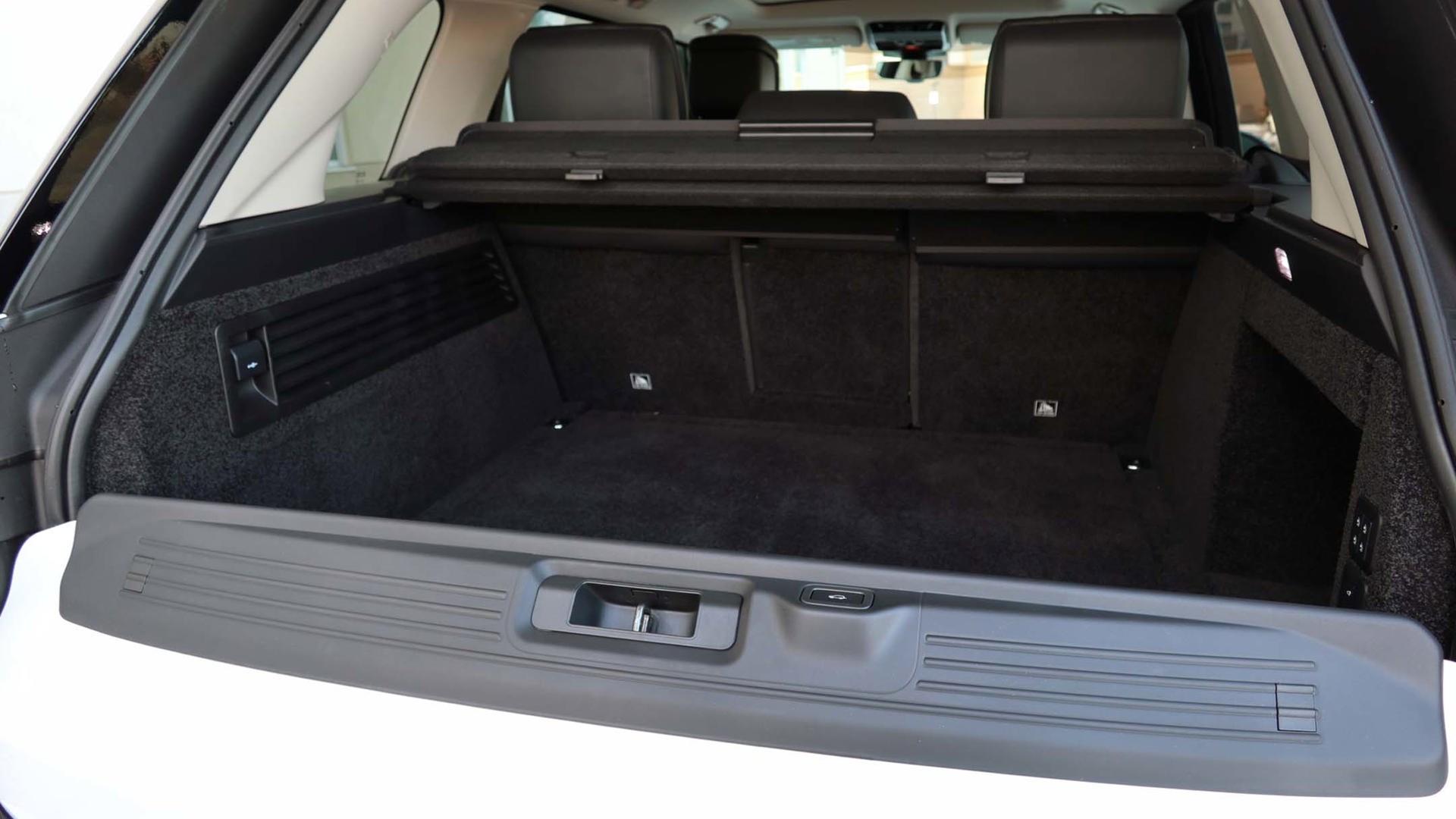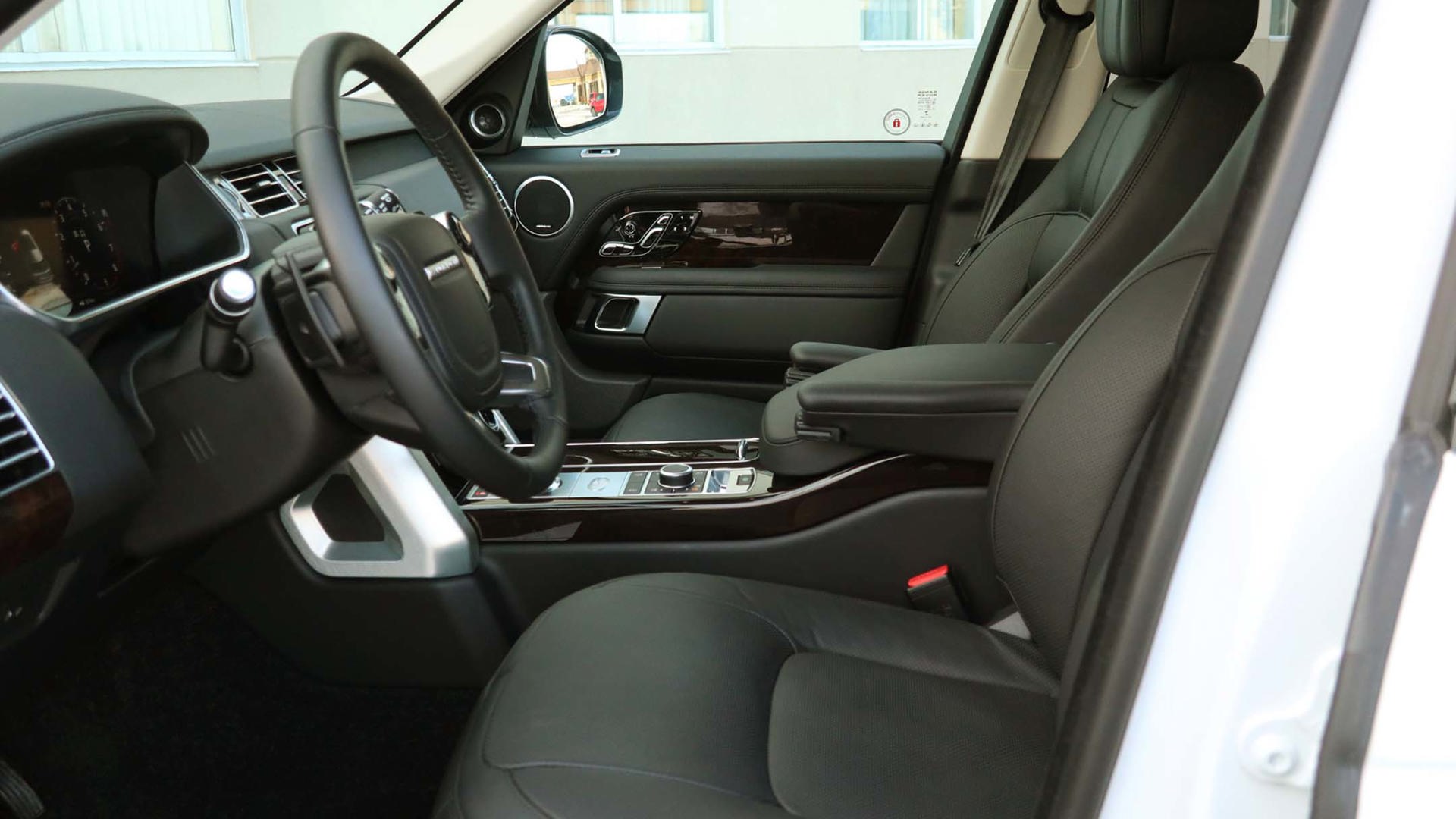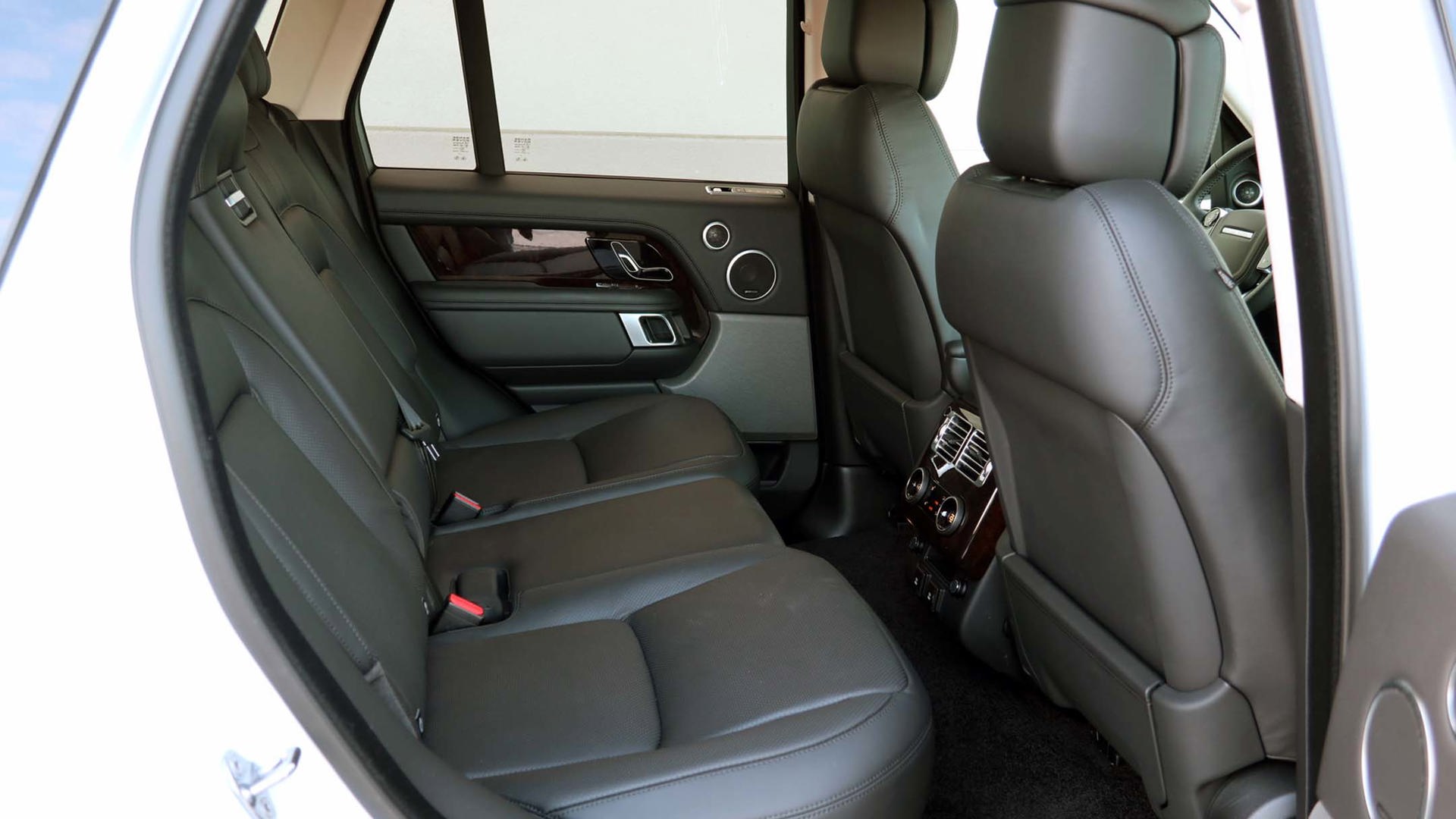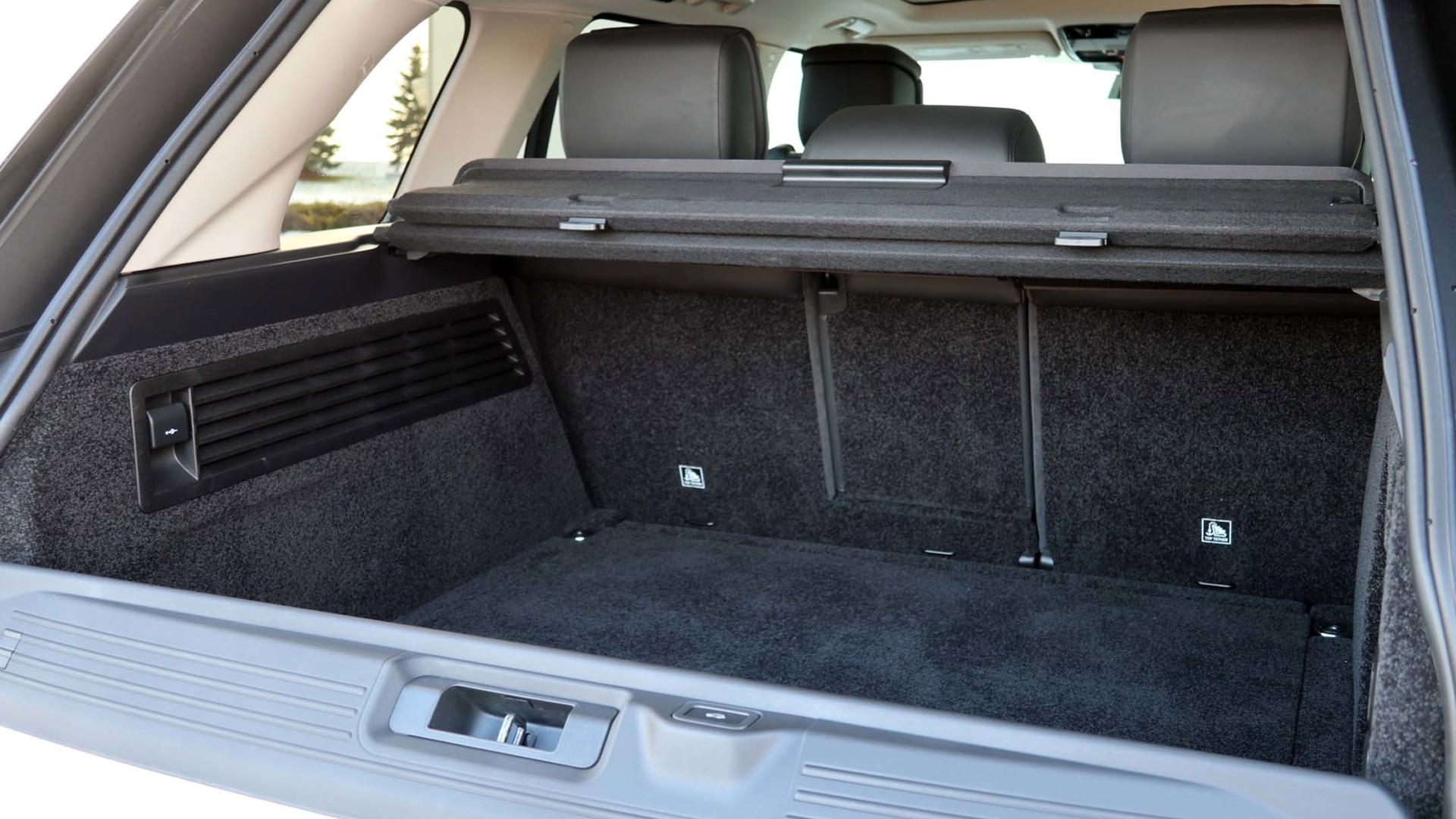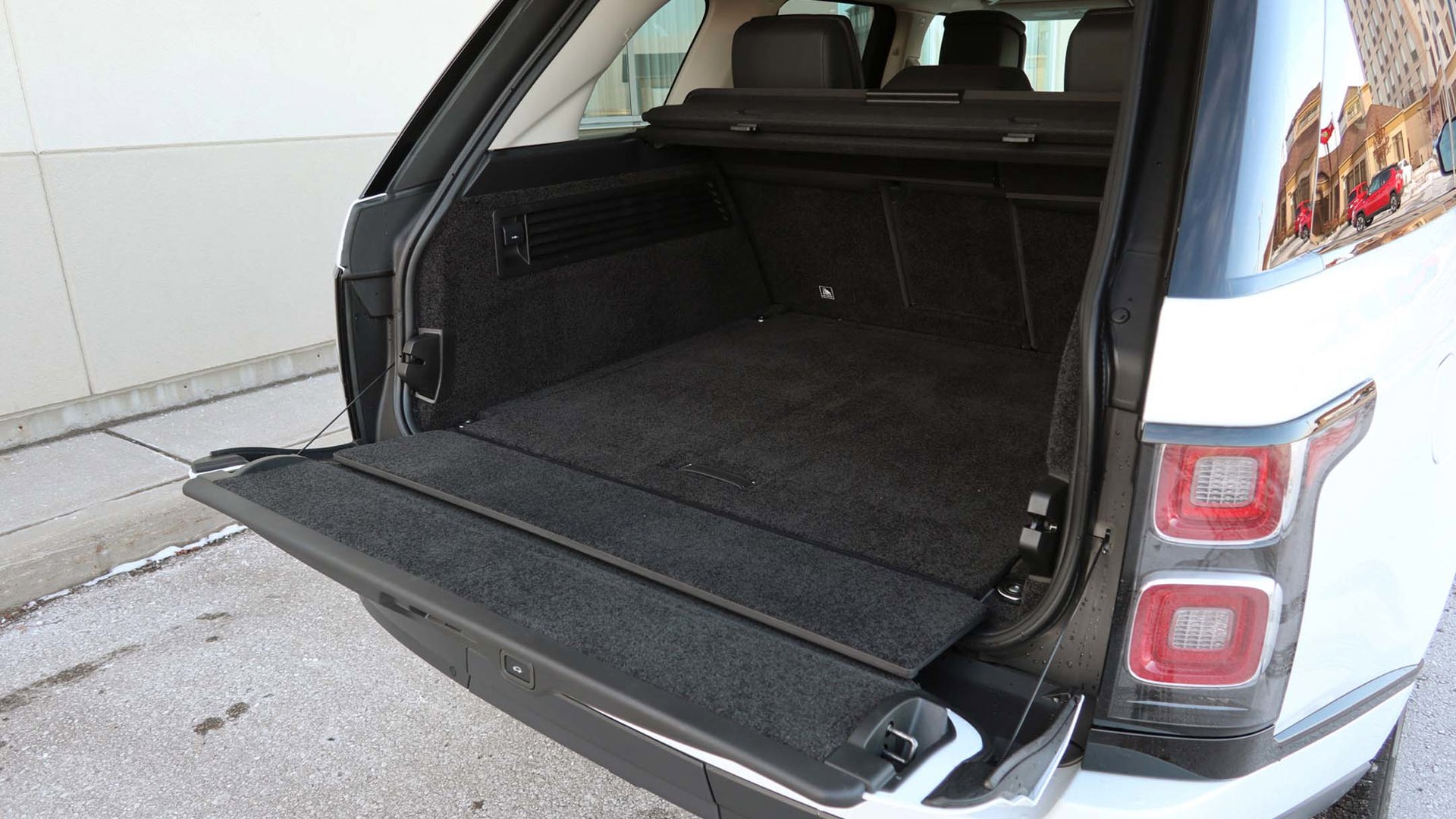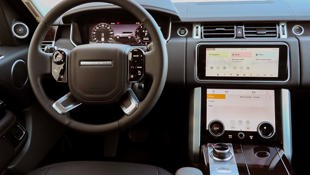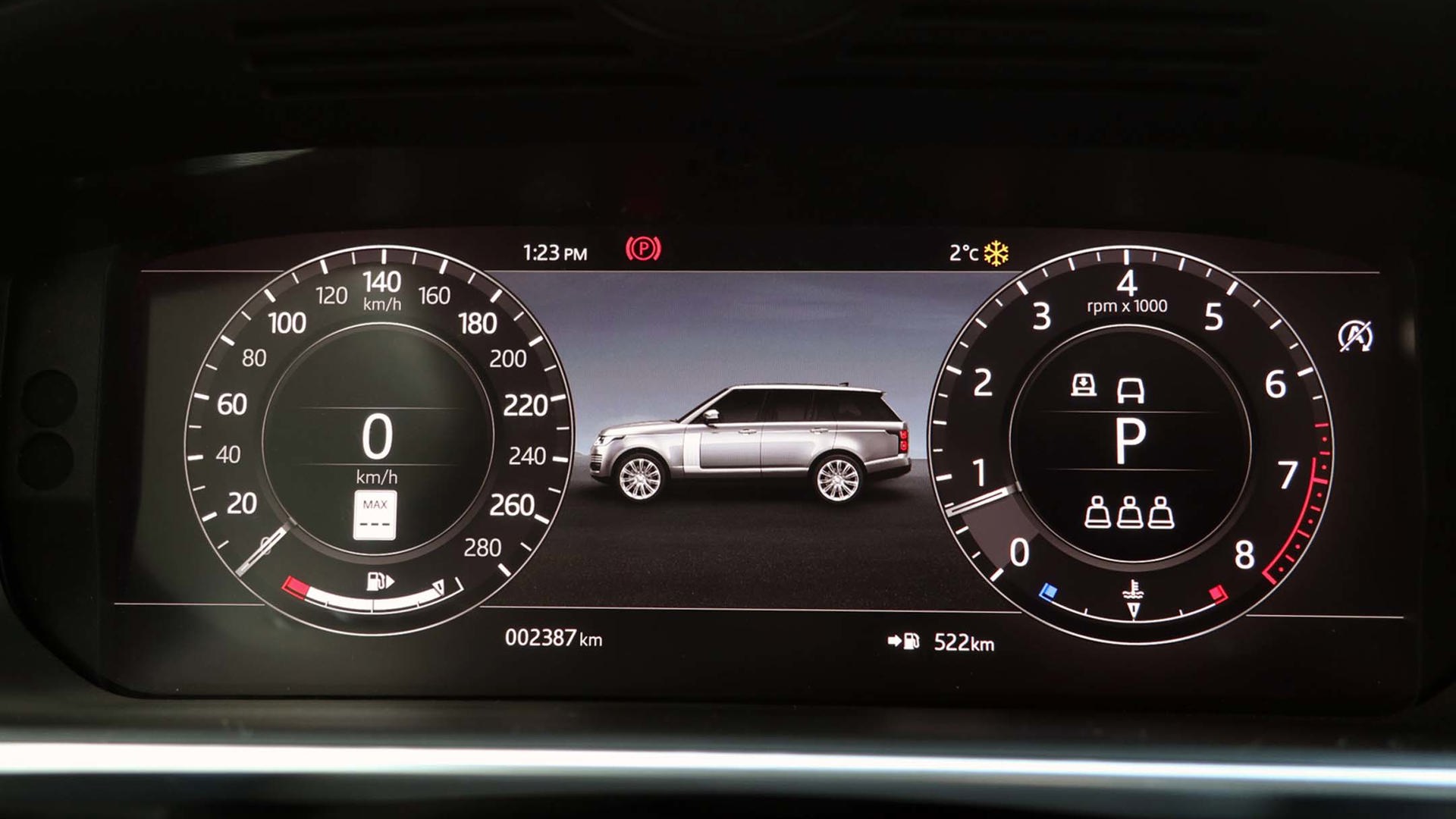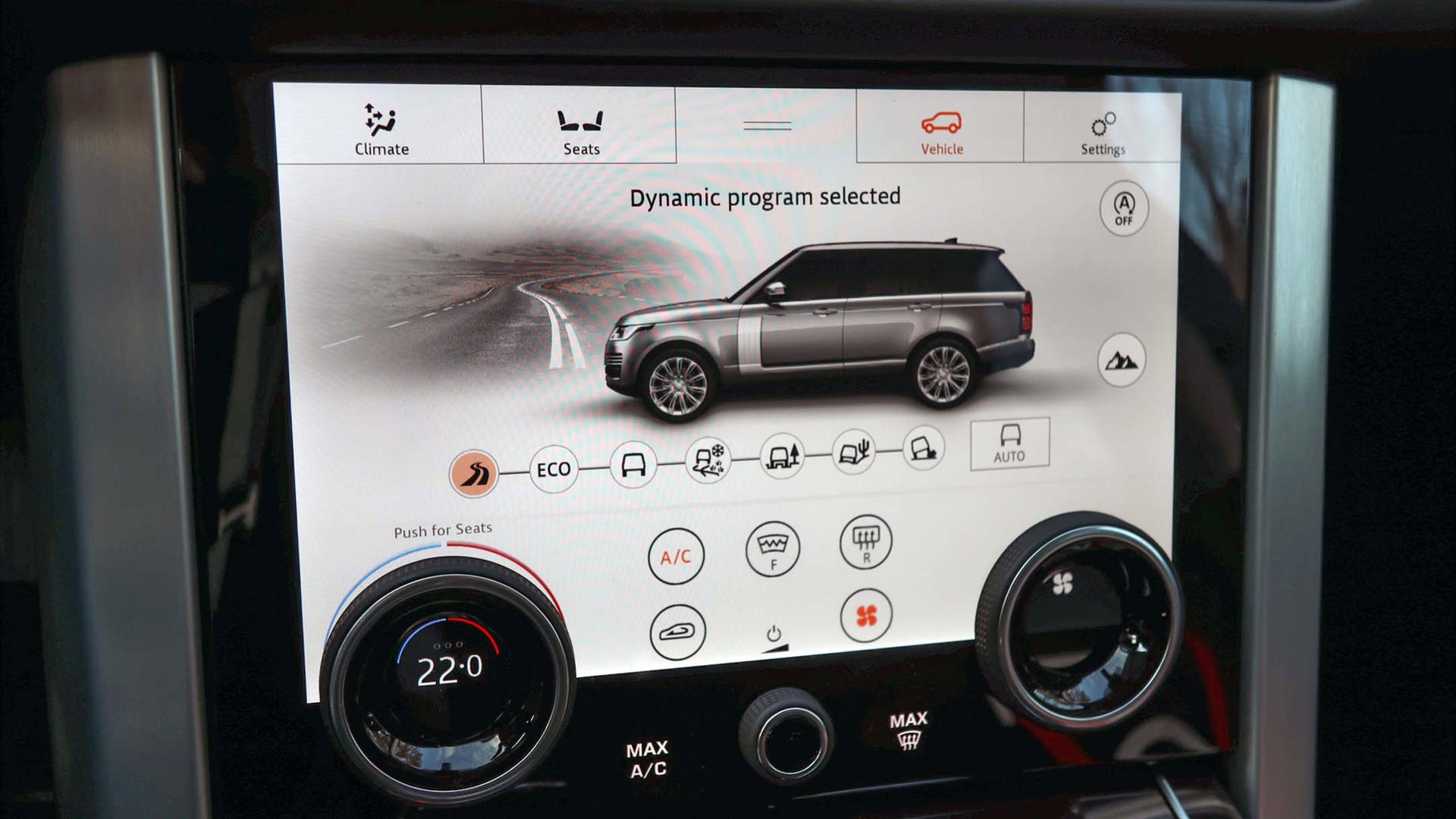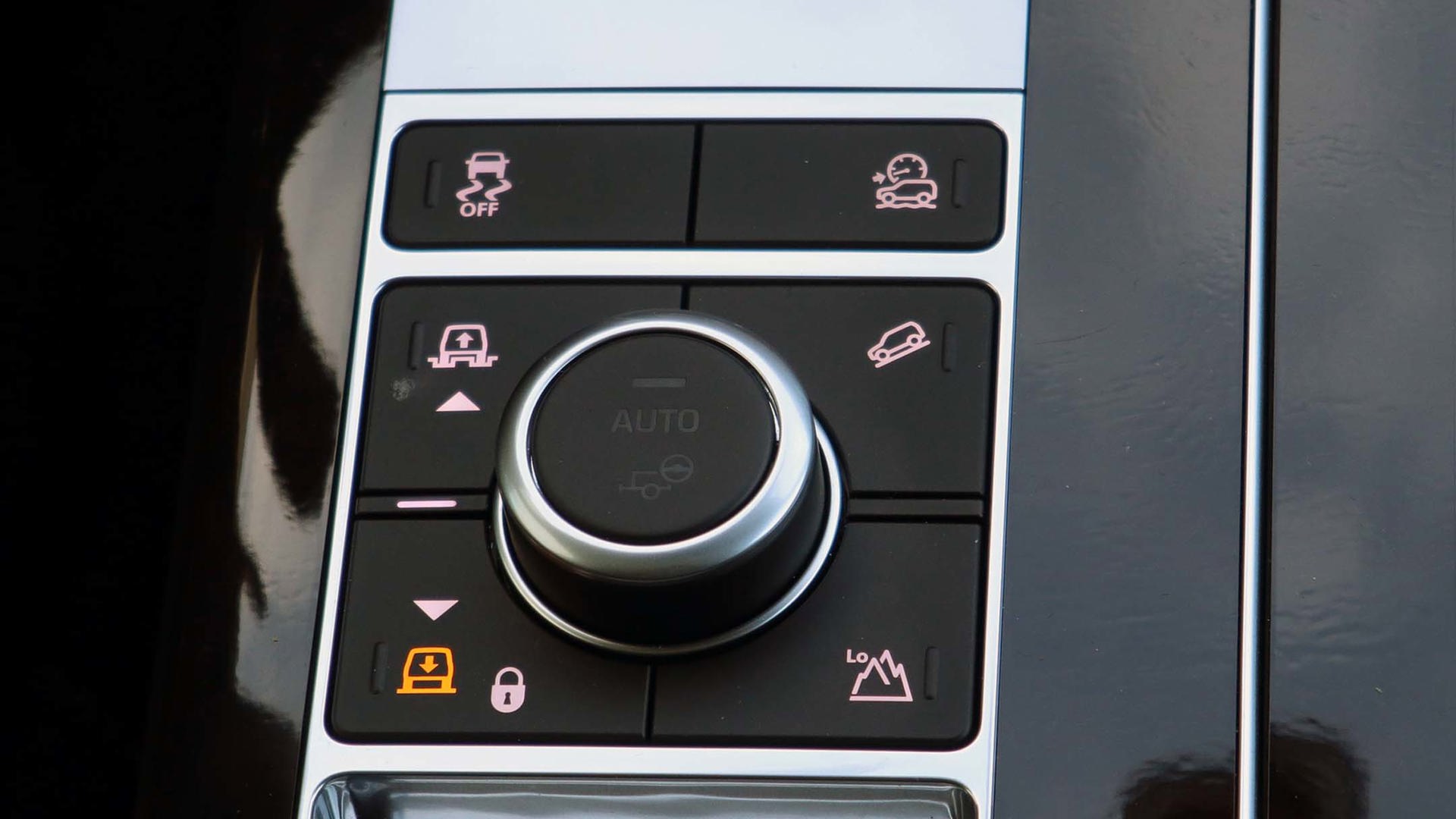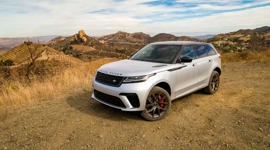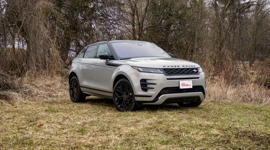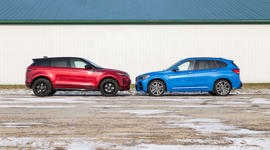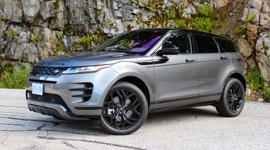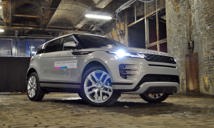 AutoTrader SCORE
AutoTrader SCORE
-
STYLING7/10
-
Safety8/10
-
PRACTICALITY6/10
-
USER-FRIENDLINESS4/10
-
FEATURES8/10
-
POWER9/10
-
COMFORT9/10
-
DRIVING FEEL8/10
-
FUEL ECONOMY7/10
-
VALUE7/10
If you want to make a grand entrance, arriving in a Range Rover will certainly get the job done. This big beast, which sits at the top of Land Rover’s hierarchy, gains mild hybrid and plug-in hybrid versions for 2020, but the P525 HSE tested here comes powered by a supercharged V8 engine.
A longer wheelbase is available but mine was standard length, starting at $123,000. Very few of these forgo optional equipment, and my tester was kitted out with $16,870 in options, bringing its asking price to $139,870 before freight and taxes.
Styling: 7/10
Looks are always subjective, and I admit that I’ve never really been enamoured with the Range Rover’s box-on-box styling. However, I will temper that by saying it’s uncluttered and unmistakable, and is in keeping with the brand’s squared-off heritage appearance.
My tester’s Fuji White paint was offset with a black roof, which costs $660, along with 22-inch gloss black wheels for $2,860, and a $2,400 package that blacked out my tester’s mirrors, grille, badge, and cladding. I also had a heated windshield for $410, which does a good job of clearing away fog but which uses thinly spaced vertical electric wires to do it – and once you’ve spotted them you can’t unsee them.
Safety: 8/10
As often happens at this level, active safety features that you might expect to be standard equipment come at an extra cost. In the case of my tester, that meant buying a $4,030 Driver Assist Package to get adaptive cruise control with lane-keep assist, blind-spot monitoring, high-speed emergency front braking, and self-parking.
My vehicle also had a Vision Assist Package, for $1,830, which added automatic high-beam headlights, front fog lamps, ambient lighting, and a head-up display. The Range Rover can tow a maximum of 7,716 lb (3,500 kg). Mine had a $950 towing assist package, which includes display lines in the rearview camera that shows where the trailer’s going to go when you back it up – although you must first put a sticker on the trailer and then configure the system to it.
Practicality: 6/10
Sport-utilities tend to be practical by nature, and the Range Rover has a considerable amount of interior space, which its designers didn’t mess up by adding a third row of seats.
But there’s not a great deal of small-item storage up front, and while I could forgive that, I dropped my rating down because of the tailgate. It’s not a single lift-up item, but rather, a two-piece clamshell. To get at the cargo space you must lower the bottom half, and then stretch over it. There’s a button at the back to lower the air suspension, but if you’re not very tall, or the items have slid toward the seats, you’re simply not going to be able to reach them. Even with the tailgate’s hands-free function, what’s the point of providing lots of cargo space if it isn’t easily accessible?
User Friendliness: 4/10
I suppose, at this premium point, there’s a certain level of cool attached to having giant glass screens instead of buttons. But when I’m in charge of the steering wheel, I want to be able to quickly access functions without having to search for icons.
Almost all of the climate and infotainment functions are behind glass, and they disappear in the glare when the sun hits them. It takes a while for the screens to activate – on one very cold morning I waited six seconds, which doesn’t sound horribly long until you’re sitting there unable to adjust the temperature or activate the defroster. And several functions require at least two steps, such as the heated or ventilated seats, which require that you first tap a dial to switch it from cabin temperature to seat temperature. Even the voice control, upon being asked to navigate to a destination, has to think for a long time before it comes back with a response.
And yet, on the steering wheel, the cruise control is simplicity on a stick, and there’s a hard button to heat the wheel. For everything else, you’re stuck with an unforgivably way-too-complicated, way-too-slow screen interface.
Features: 8/10
The HSE is the entry trim of the full-size Range Rover series, but it still piles on lots of stuff. This includes such items as adaptive air suspension, laminated windshield and side glass, LED headlamps with washers, three-zone climate control, a power tailgate, power-folding mirrors, navigation, and an extremely impressive Meridian sound system.
Sixteen-way heated seats are standard, but my vehicle was optioned with $2,090 chairs with 22-way adjustment, massage, and heating and cooling, along with climate-controlled seats in the rear. My vehicle also came equipped with an Activity Key – a bracelet that’s waterproof up to 18 metres and which locks or unlocks the truck when you put it against one of the letters on the tailgate badge, allowing you to lock your keys inside instead of carrying them.
Power: 9/10
A 5.0L supercharged V8 lurked under the hood of my tester, churning out 518 hp and 461 lb-ft of torque. That goes through an eight-speed automatic, en route to powering all four wheels. But along with the numbers, it’s how it’s delivered that’s even more impressive. You might have to wait for screen functions, but definitely not for power. It’s there as soon as you hit the throttle, taking you into lose-your-licence territory before you even realize you’re there.
But Land Rover is also about off-road ability, and its low-range setting can harness that power for lower-speed grunt. Optional on my tester was terrain progress control – basically low-speed cruise control for off-roading – and an enhanced version of Terrain Response that can be set for various conditions, such as sand or rock, or an automatic mode that figures out how to best get over whatever’s under its wheels. And if a river should be in the way, the Range Rover can also wade through water almost to the top of its tires.
Comfort: 9/10
Those extra-charge seats chew up a lot of cash, but they also deliver support that stays comfortable on long drives. And with 22 ways to move them around, it was easy for me to find the right seating position.
As you’d expect, legroom is generous both up front and for those in behind. Second-row passengers get well-bolstered and supportive seats, along with their own temperature controls, fan speed and mode, and seat climate dials.
Driving Feel: 8/10
As with most vehicles that do a superb job off-road, there’s a bit of compromise with the Range Rover’s on-road manners. It delivers a very comfortable ride, but it can also be a bit wallowy. Consider it part-and-parcel of being able to climb a mountain with it.
I like the well-weighted steering and the tight turning radius, which makes it surprisingly easy to manoeuvre in tighter spaces despite the vehicle’s size. The adaptive air suspension automatically selects the right height, but can also be raised or lowered via buttons on the console for off-roading, or for easier entry and exit.
Fuel Economy: 7/10
You can’t change reality: You play, you pay. The diesel and hybridized versions will make you far more pleased at the pump, but even so, I don’t think the official figures of 14.4 L/100 km in the city and 11.2 on the highway are all that bad for a V8 that’s being force-fed by a supercharger and giving you back 518 hp in return.
Value: 7/10
For all the sport-utilities on the market, my Range Rover P525 doesn’t have much in the way of direct competition for its level of performance and base $123,000 price. Porsche’s Cayenne Turbo isn’t as powerful, but it starts at almost $19,000 more. BMW’s X7 starts around $114,000 but makes 456 hp to the Range Rover’s 518 ponies.
For general shape, serious off-road ability and in-your-faceness, Mercedes-Benz’s G-wagon is probably the closest, but the 416-hp version is some $11,000-plus more, and to get the 577-hp AMG version, prepare to cough up some $45,000 extra.
Conclusion
What I find a shame with this Range Rover is that the vast majority sold will never fulfill their potential. That sweet eight-cylinder can’t legally be taken to its limit on the street, and while it’s an incredibly accomplished off-roader, who takes their $100,000-plus new vehicle on the trail? The bottom line is that Range Rover fans want the comfort, the badge, and the prestige, and that’s what this big beast is really all about.
| Engine Displacement | 5.0L |
|---|---|
| Engine Cylinders | V8 |
| Peak Horsepower | 518 hp @ 6,000 rpm |
| Peak Torque | 461 lb-ft @ 2,500 rpm |
| Fuel Economy | 14.4/11.2/12.9 L/100 km cty/hwy/cmb |
| Cargo Space | 639 / 1,943 L seats down |
| Model Tested | 2020 Land Rover Range Rover P525 HSE |
| Base Price | $123,000 |
| A/C Tax | $100 |
| Destination Fee | $1,700 |
| Price as Tested | $141,670 |
|
Optional Equipment
$16,870 – Driver Assist Pack, $4,030; Active rear locking differential, $1,120; Towing package, $950; 22-inch wheels, $2,860; Black Pack appearance package, $2,400; Heated windshield, $410; Vision Assist Package, $1,830; Black contrast roof, $660; Terrain Response 2, $260; All-terrain progress control, $260; 22-way seat package, $2,090
|
|
